As we book it north through Montana at warp speed to get as far from Arizona heat as quickly as possible, certain roadside attractions just cannot be passed by!
BANNACK STATE PARK GHOST TOWN
Bannack (near Dillon, MT) is one of the best preserved ghost towns in Montana and is rich in history. Over 50 buildings are still standing, each with a story to tell. You’re shockingly allowed to tromp through most of them. Even doggies!

Bannack’s history began in 1862, when gold was discovered along the banks of Grasshopper Creek, so named for the dense grasshopper population in the area. (They had grasshoppers, we have Zika, and the world just keeps on spinning.) The subsequent gold rush led Bannack to become the first territorial capital.

Bannack’s gold was special. While most gold is 85-90% pure, some of Bannack’s assayed 99.5% pure. Gold scales were found in practically every establishment in town as people paid for goods and services directly with gold instead of bothering to convert to currency. Here are some of the original mining tools.
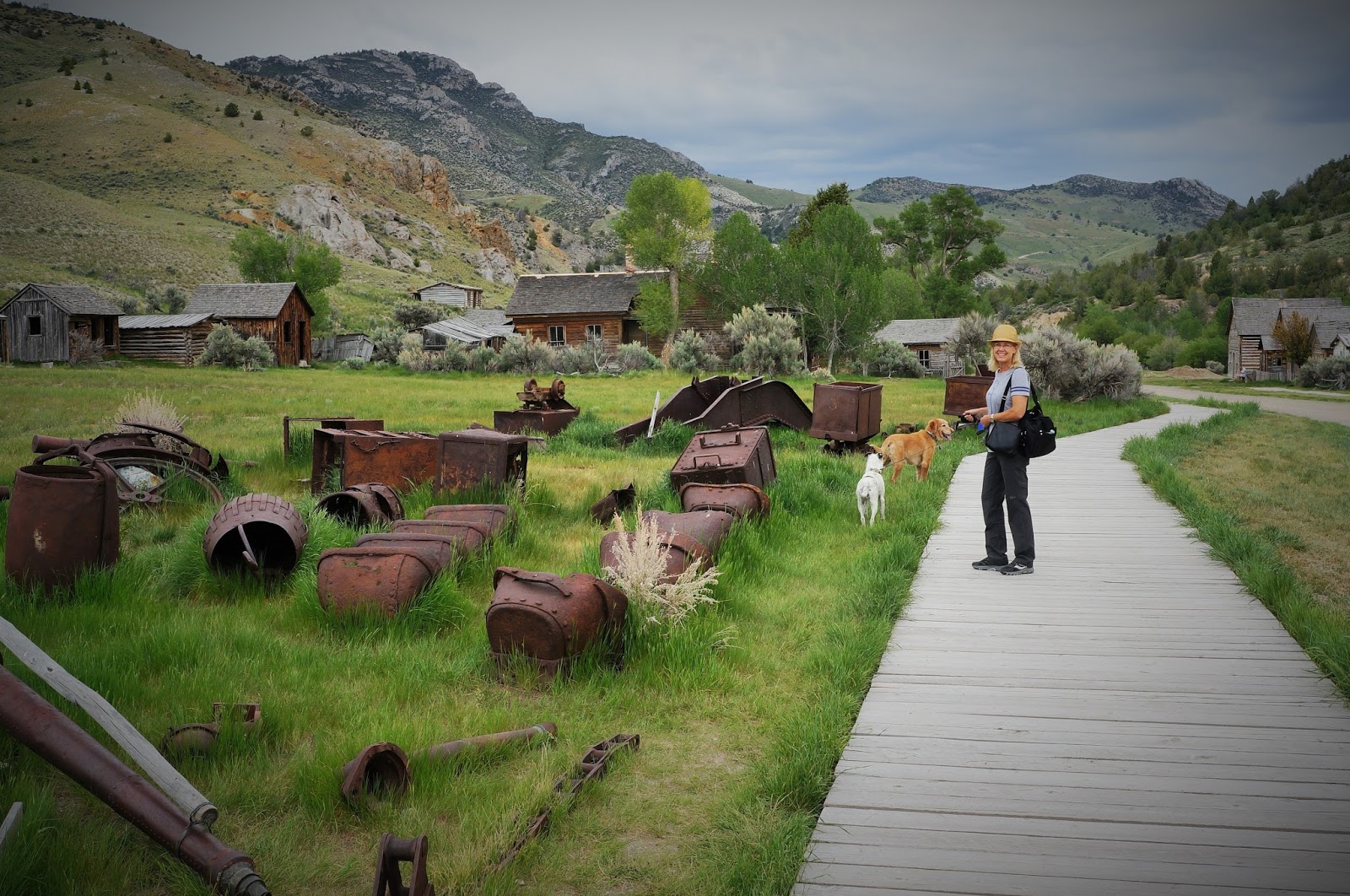
The Hotel Meade was purchased for $1,250 and was the center of town social activity. It was originally Montana’s first courthouse and was also Montana’s first hotel.
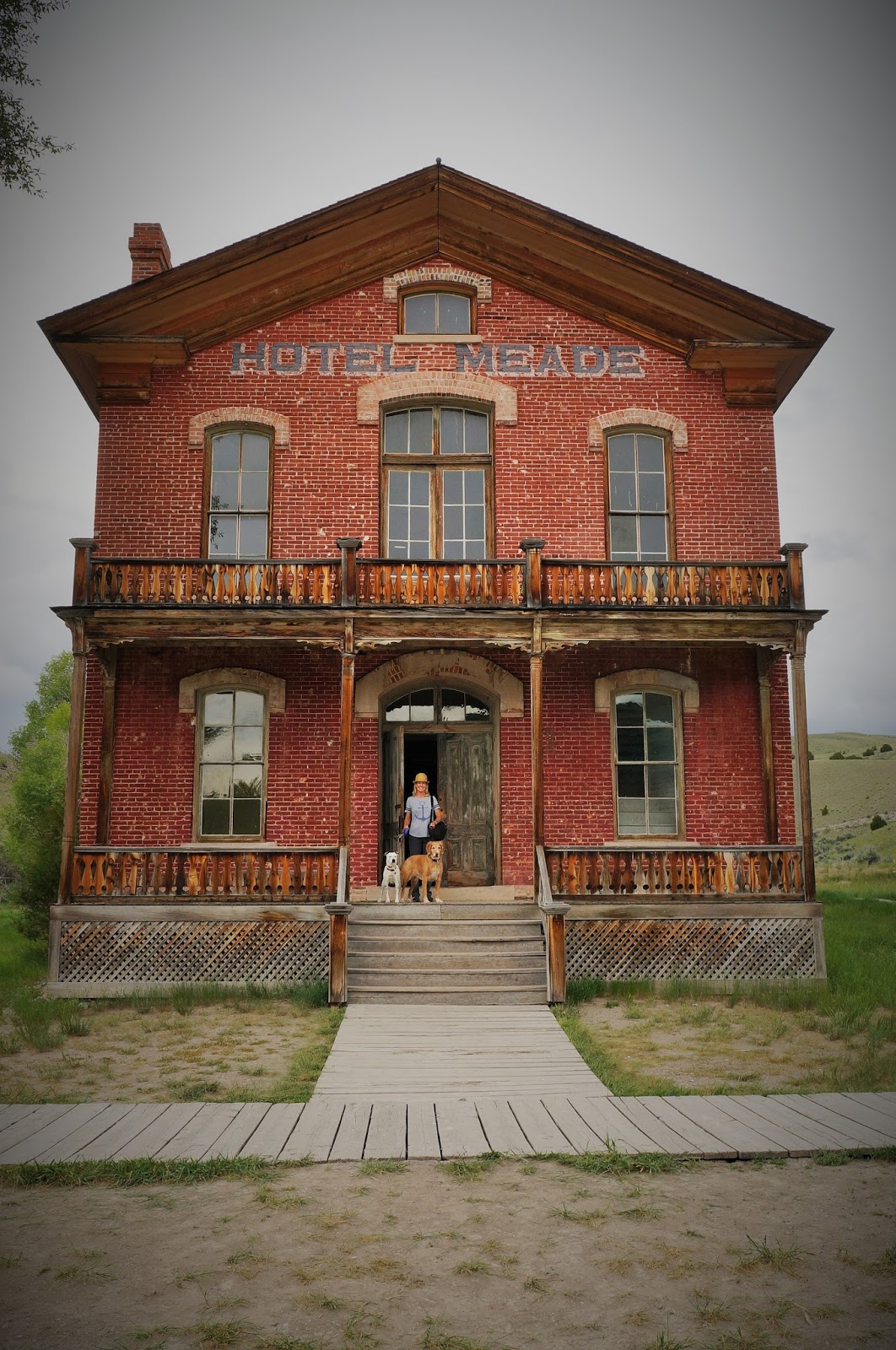
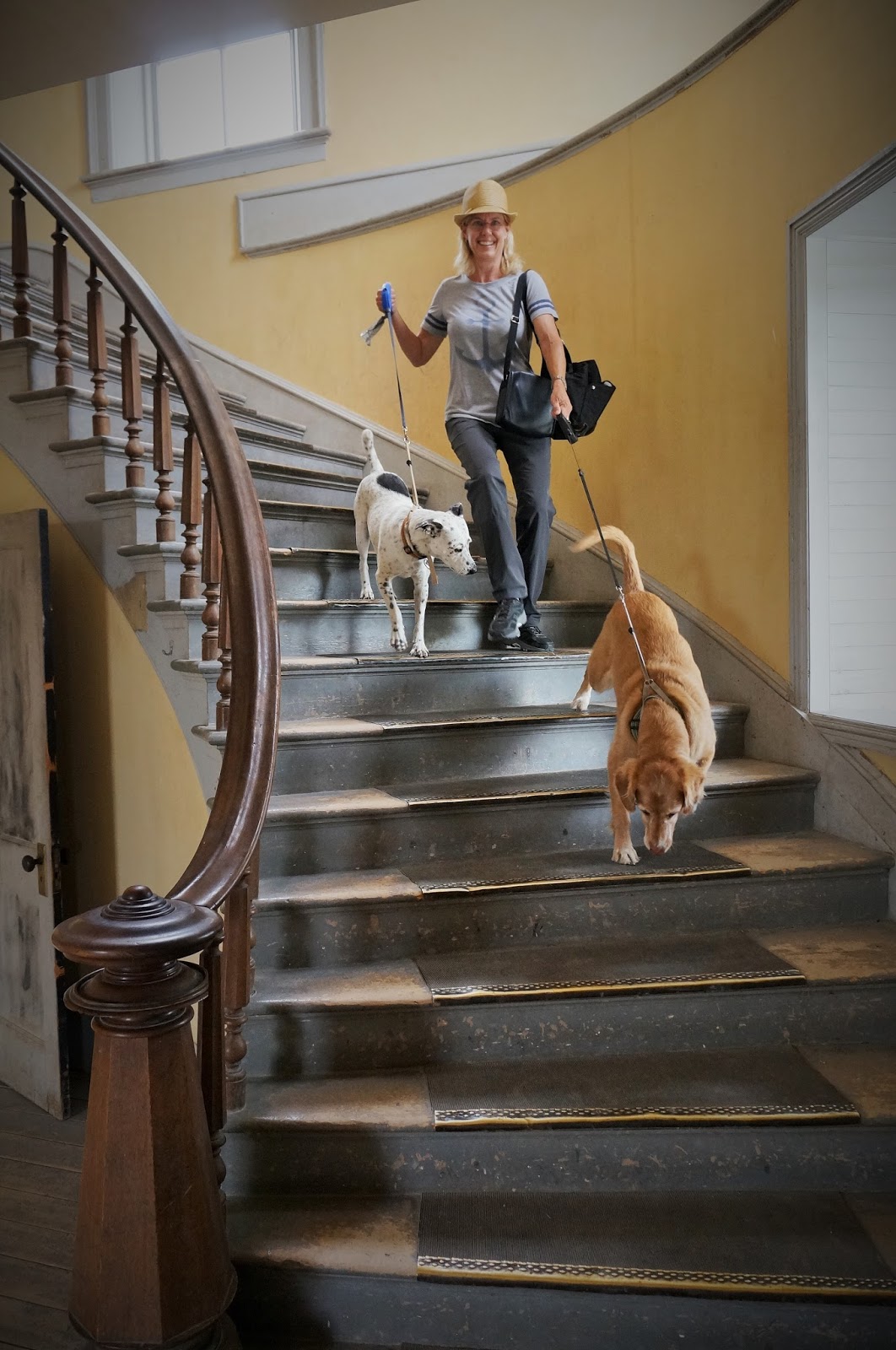
Popular activities for the town’s 3,000 residents were dances, spelling bees (the height of excitement in the late 1800’s?!), traveling theatre troupes, fishing, and even visiting the town’s bowling alley or ice skating on the frozen creek for five miles or more. Bannack even had it’s own baseball team and played against other rural communities’ teams. When you visit in winter today, they will lend you ice skates to skate on the frozen dredge pond!
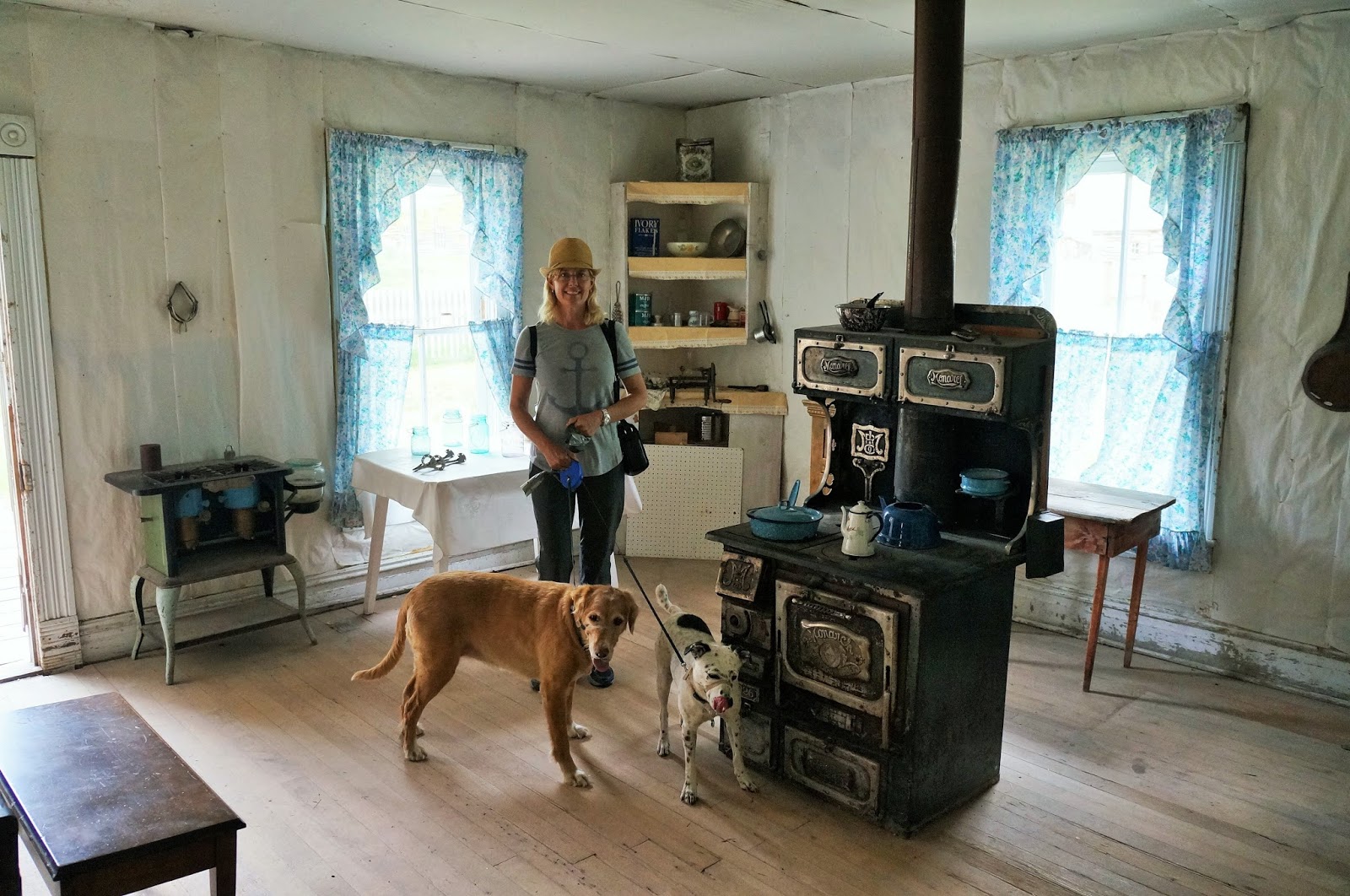
When the gold rush was at its peak, the two jail cells were rarely used … offenders were simply warned, banished or hanged. Nobody wanted the job of watching prisoners when they could be working their gold claim instead! Prisoners were chained to metal rings attached to the floor. The jail was built such that if you looked out through the barred windows, the gallows were plainly visible … just a reminder.

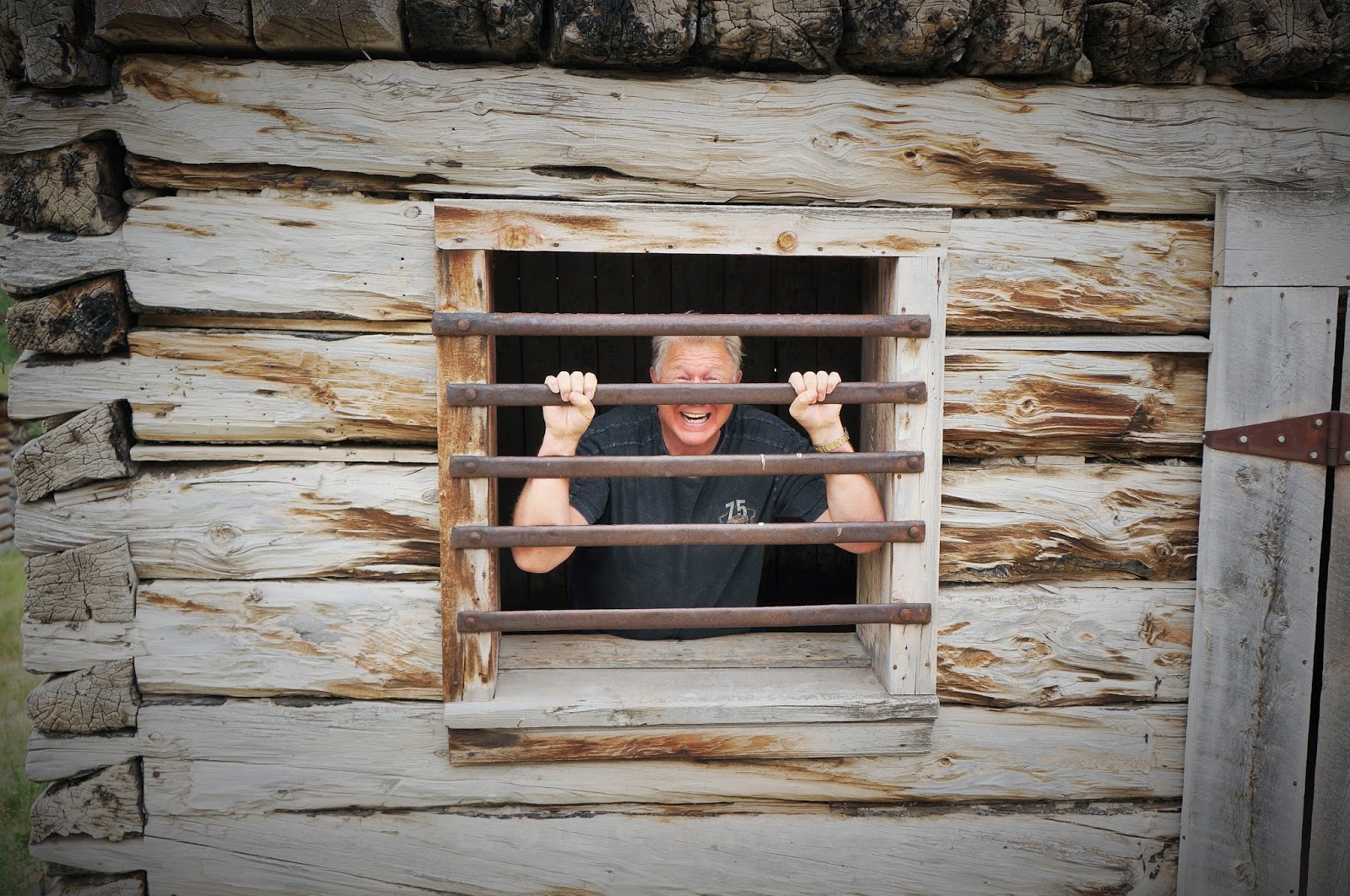
Beyond the saloons, gambling halls and brothels, many residents socialized within fraternal organizations like the Free Masons. The fraternal Masonic Lodge (upstairs) shared a building with the schoolhouse (downstairs). The photo below shows the original carpet, and historically correct furniture and equipment properly arranged for a lodge in the late 1800s.



The first schools in Bannack were “subscription” schools … essentially private schools with parents paying tuition for their children to attend. This school existed for over 70 years until the early 1940’s. Life in Bannack was tough and so was school, with snow blowing in through the cracks between the wallboards, and very few schoolbooks.
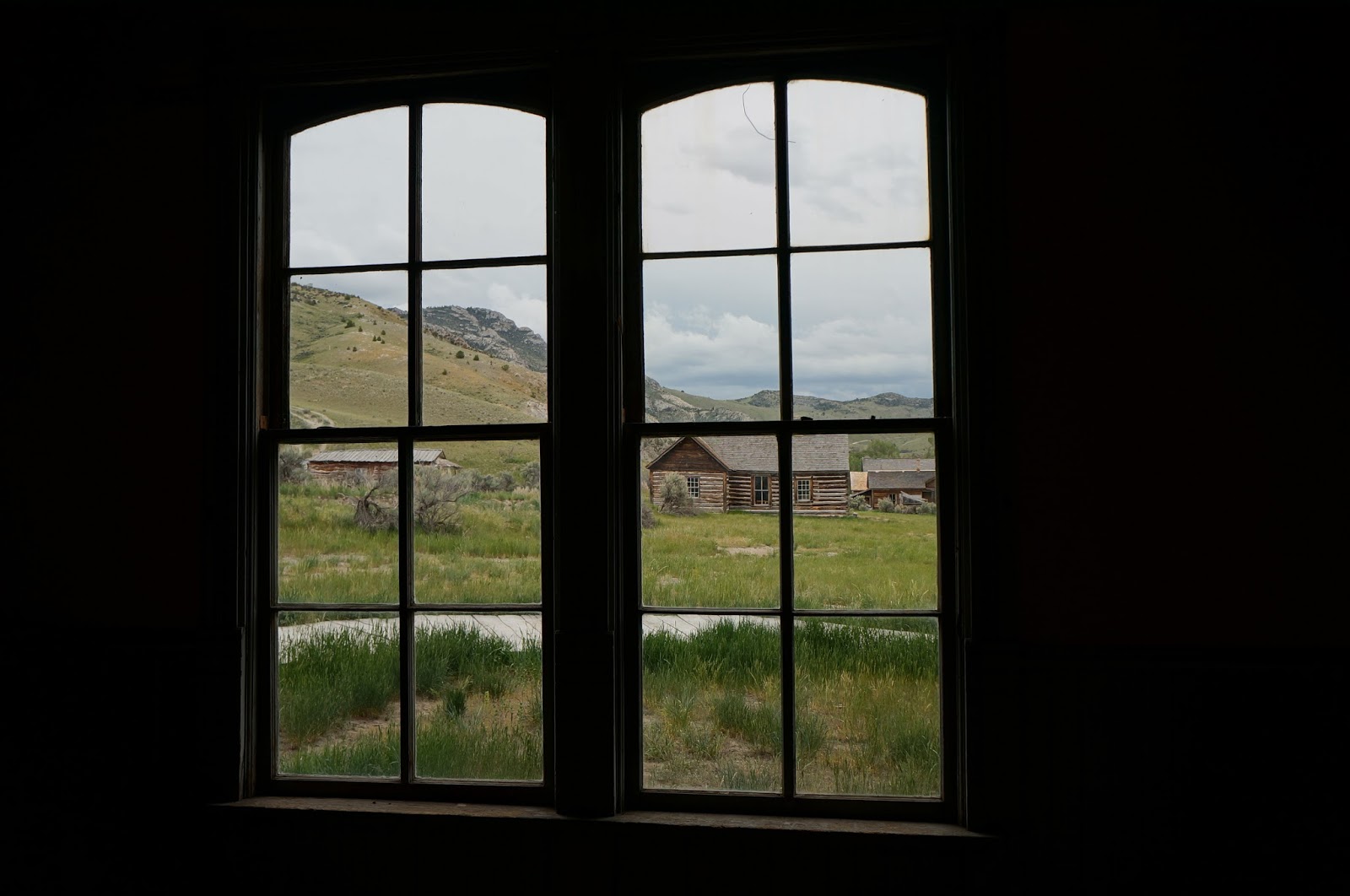
With the decline of mining, the majority of population moved on and Bannack was on its way to becoming a ghost town. Once the proud capital of the Territory of Montana, it became abandoned until the state acquired the property and buildings to preserve Bannack for future generations.
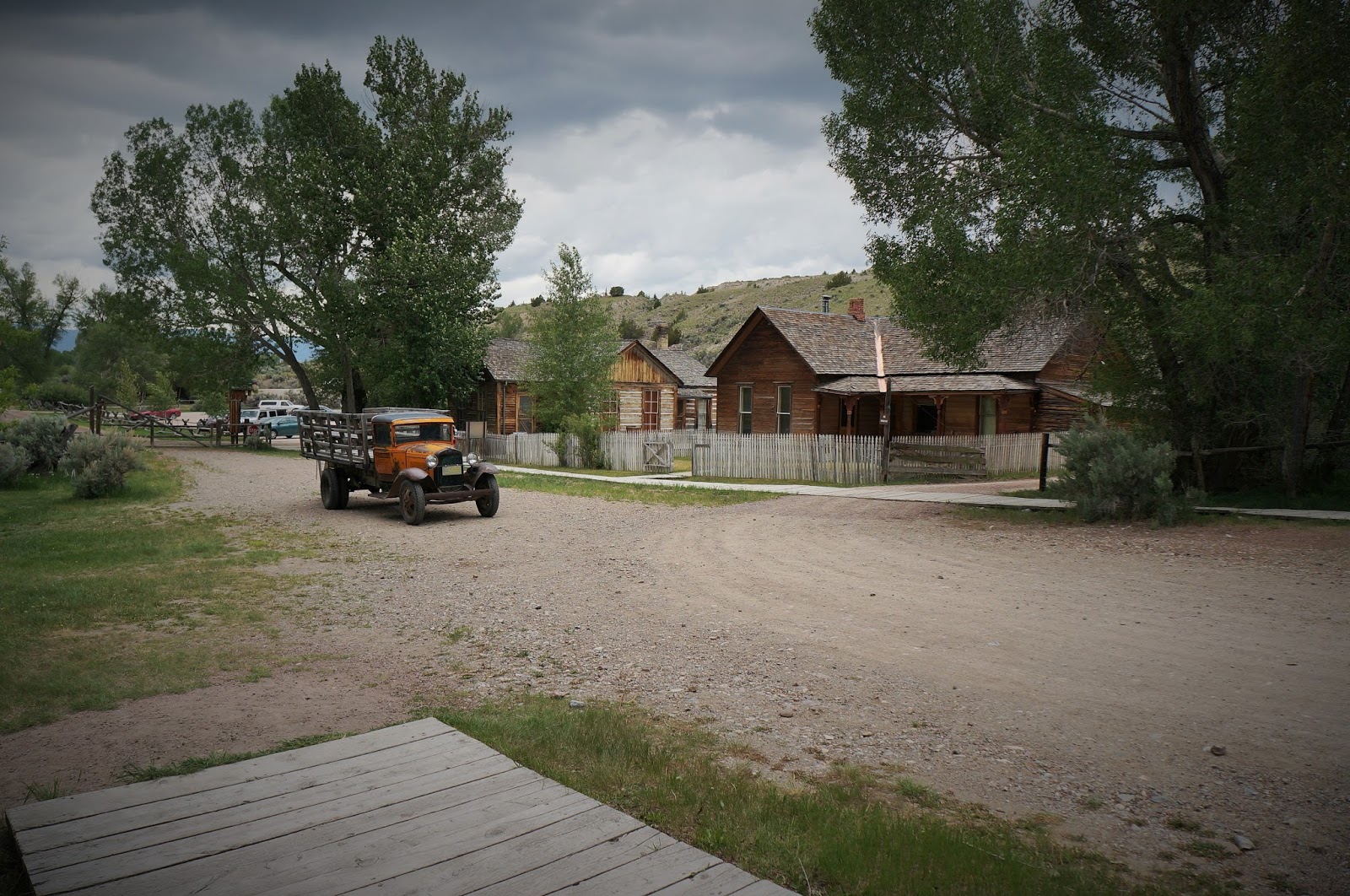
The rustic Bannack Cemetery began to be used in 1876, and over 60 marked graves provide a testament to the harsh realities of life in a frontier town, where most inhabitants died very young.
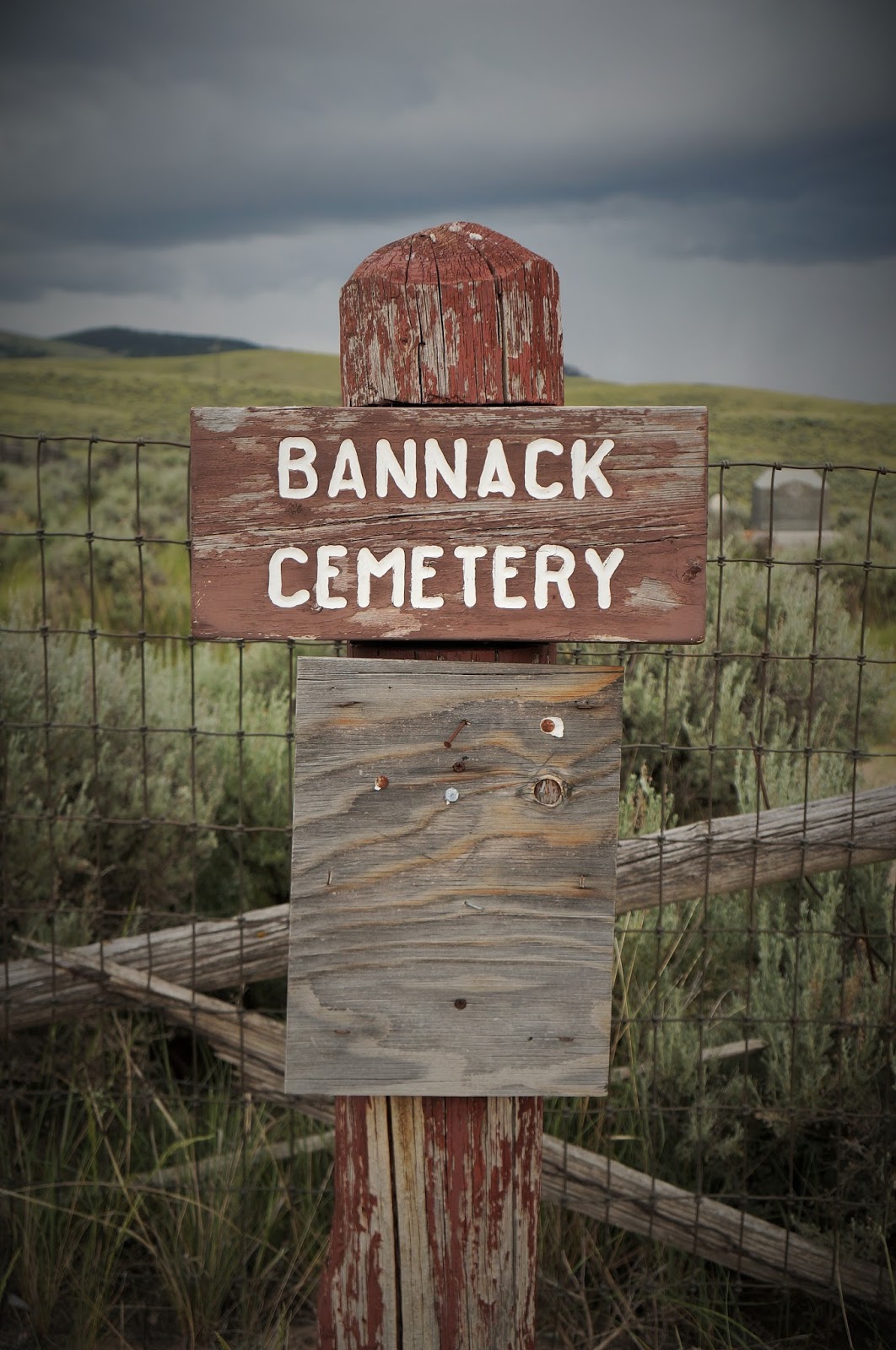
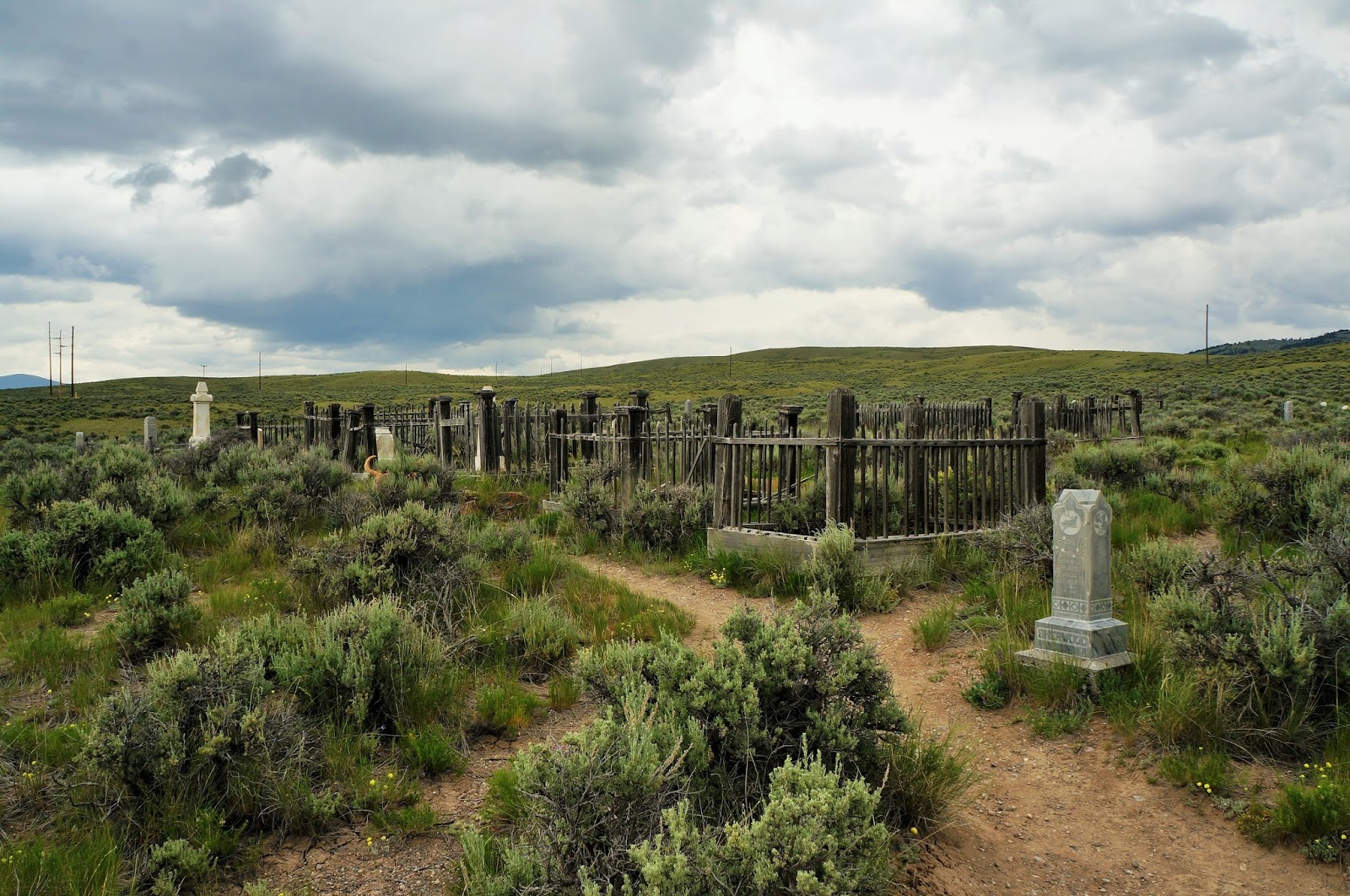

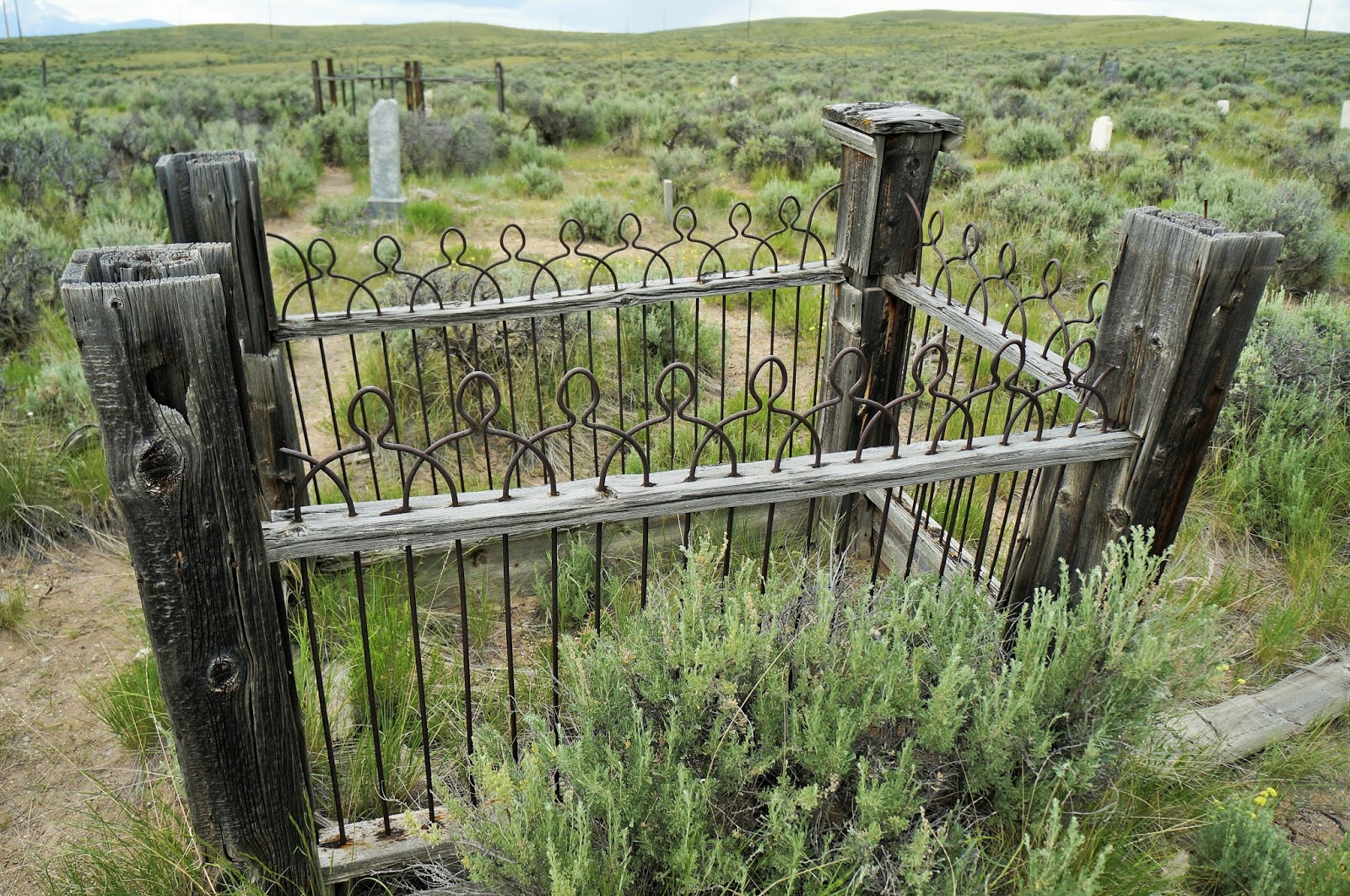
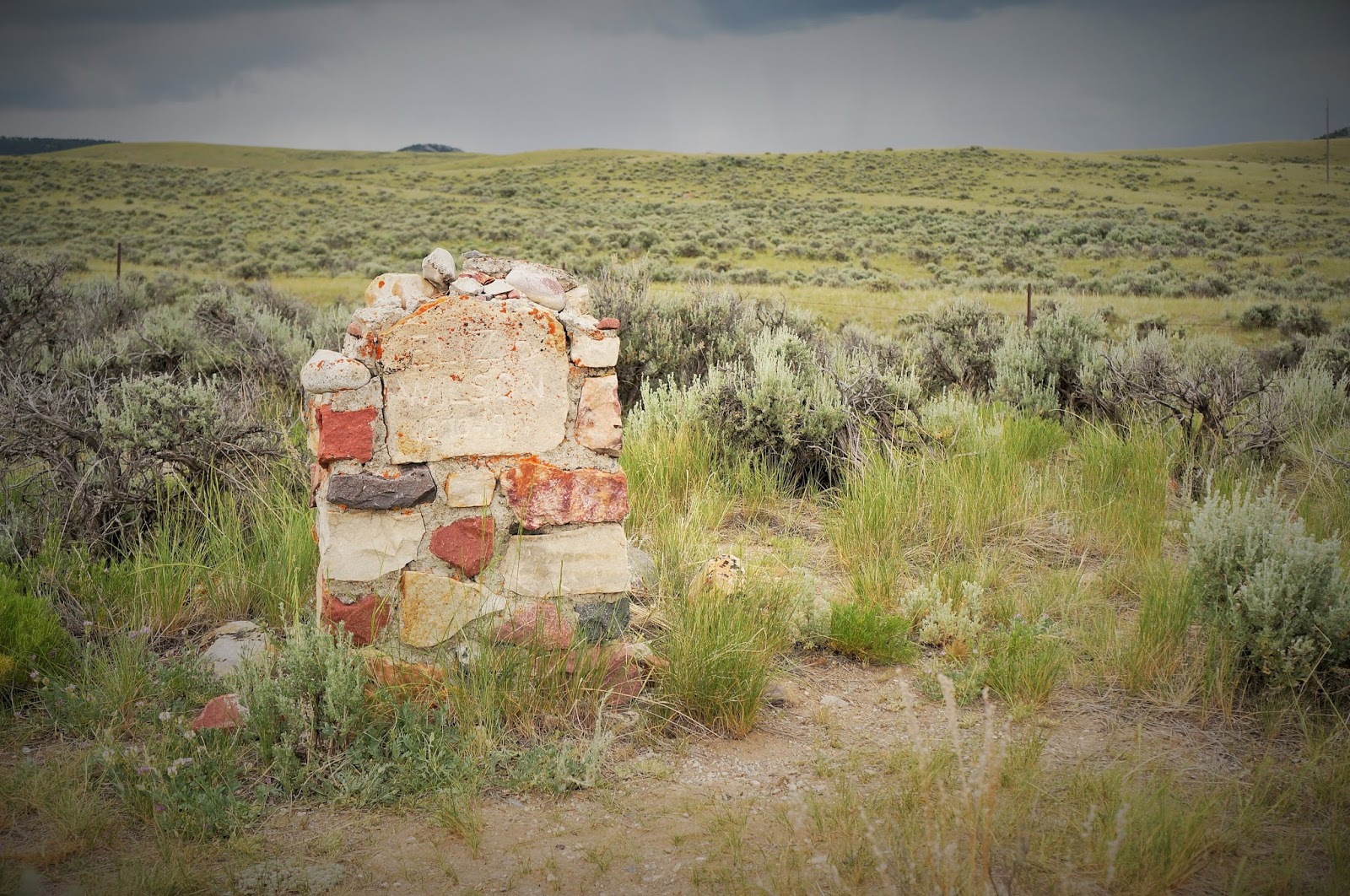
OLD MONTANA PRISON
We were excited to continue our tour of prison museums after thoroughly enjoying The Colorado Prison Museum in Canon City during last summer’s adventures. Old Montana Prison in Deer Lodge was Montana’s only home for convicted criminals for 108 years starting in 1871. Inmates included at least one member of Butch Cassidy’s “Wild Bunch” and two of the top three suspected “Zodiac Killer” candidates.
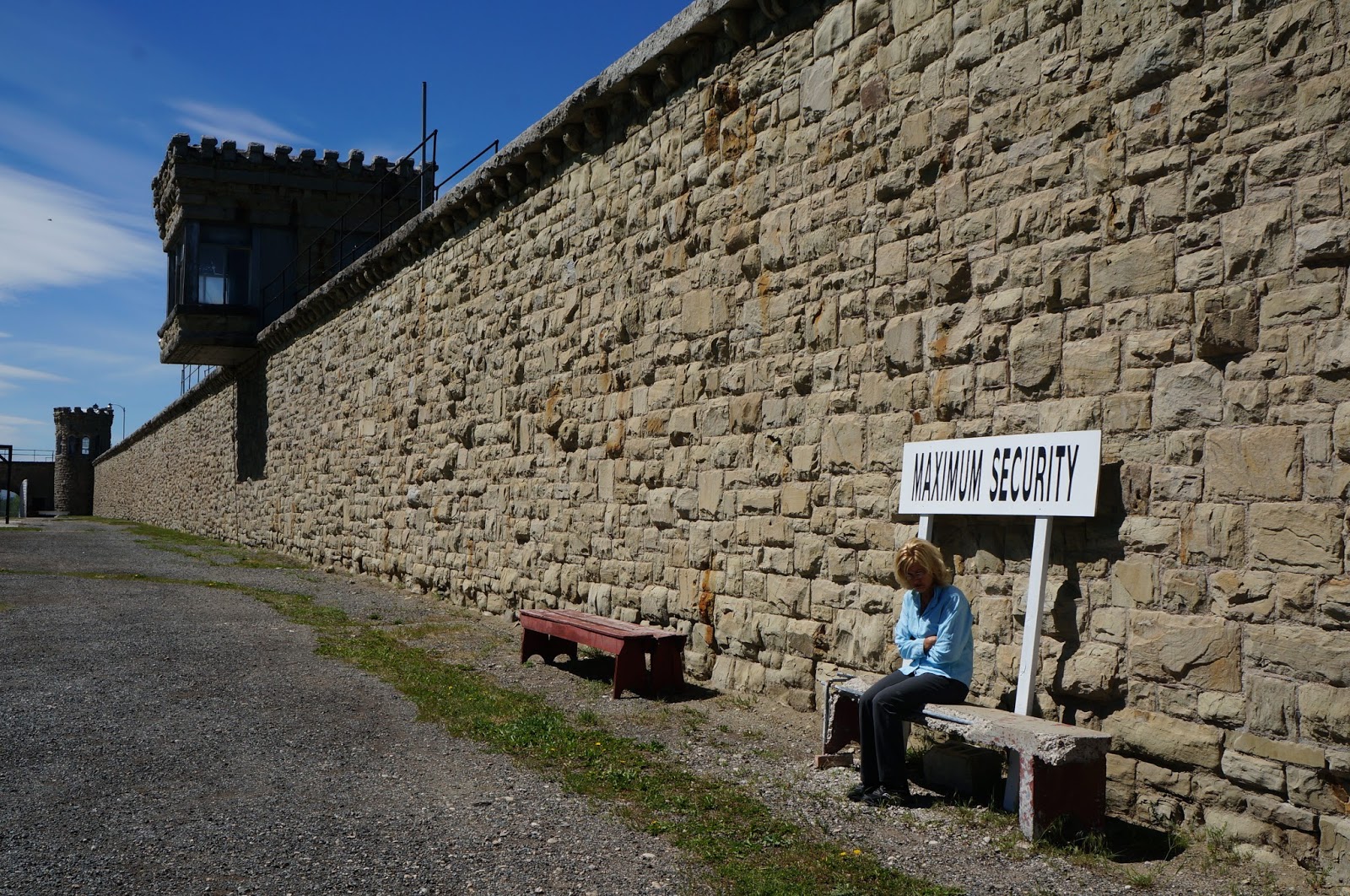
The wall, built in 1893 with convict labor, is 24 feet high and 4.5 feet thick at the bottom, extending four feet underground. This replaced a 12 foot high wooden fence. (A wise improvement.)

Over 50% of the prison population was allowed to live and work outside the grounds, but presumably not the fellas who were potential escapees and were required to wear concrete-bottom shoes weighing 20 pounds each.
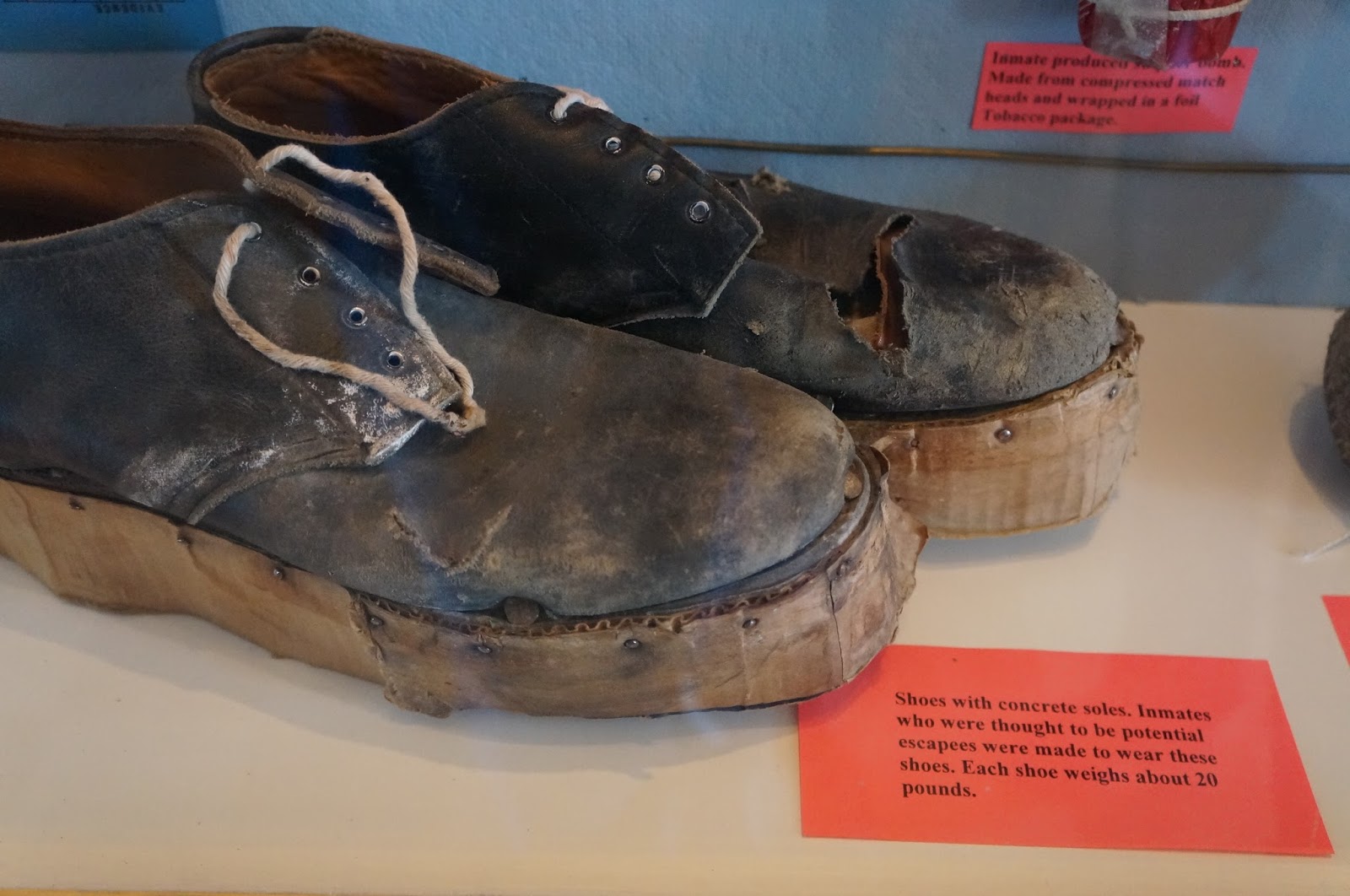
The prison had a “modern” medical facility beginning in 1935 that had an infirmary, surgical hospital, and dental and psychiatric care.
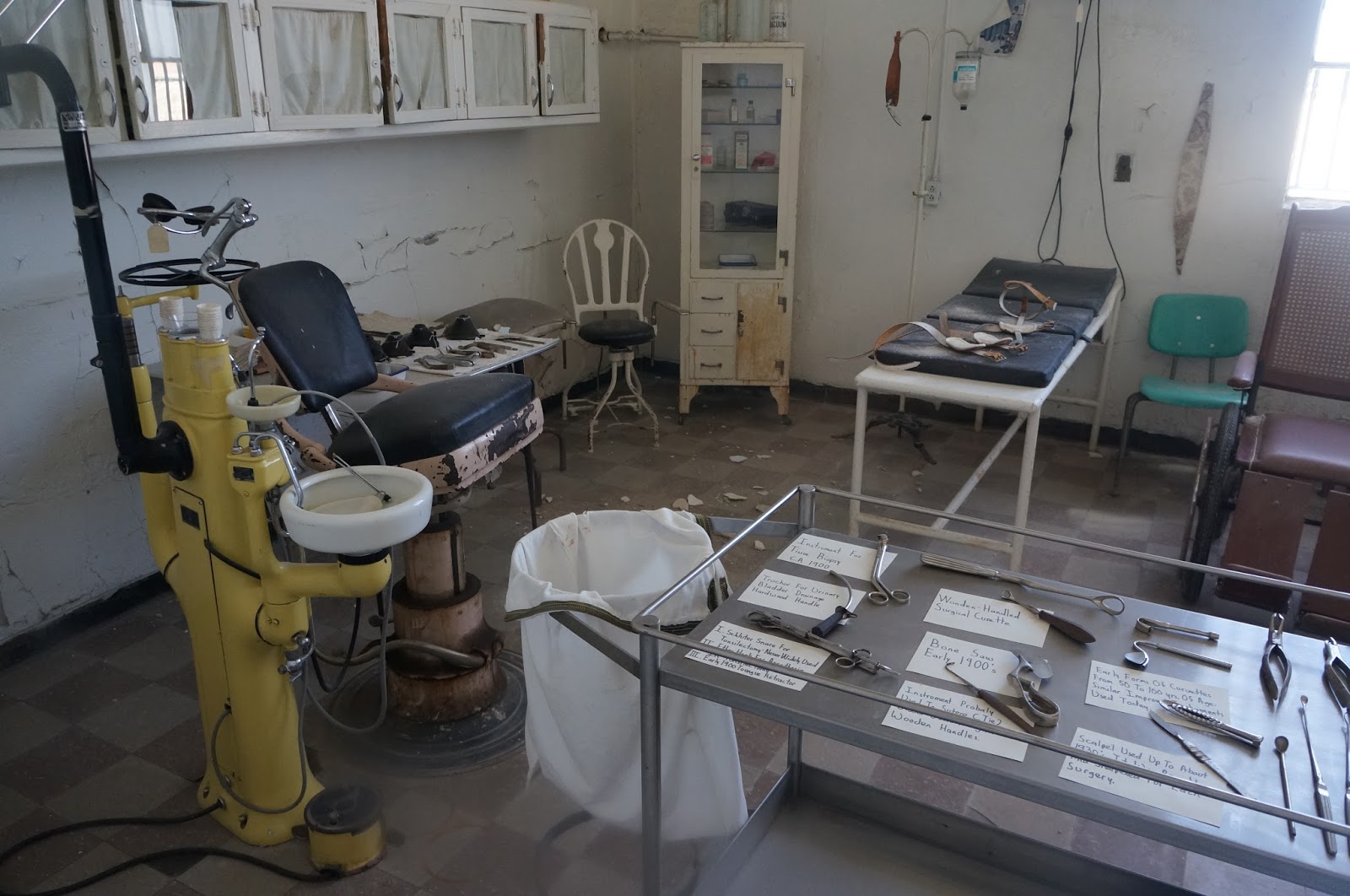
Entrance to the prison was through one main entrance. The doors were opened with a metal key that was literally lowered down on a rope from the guard’s station above. After unlocking and entering and relocking, the key was returned on a second rope through a hole in the ceiling.
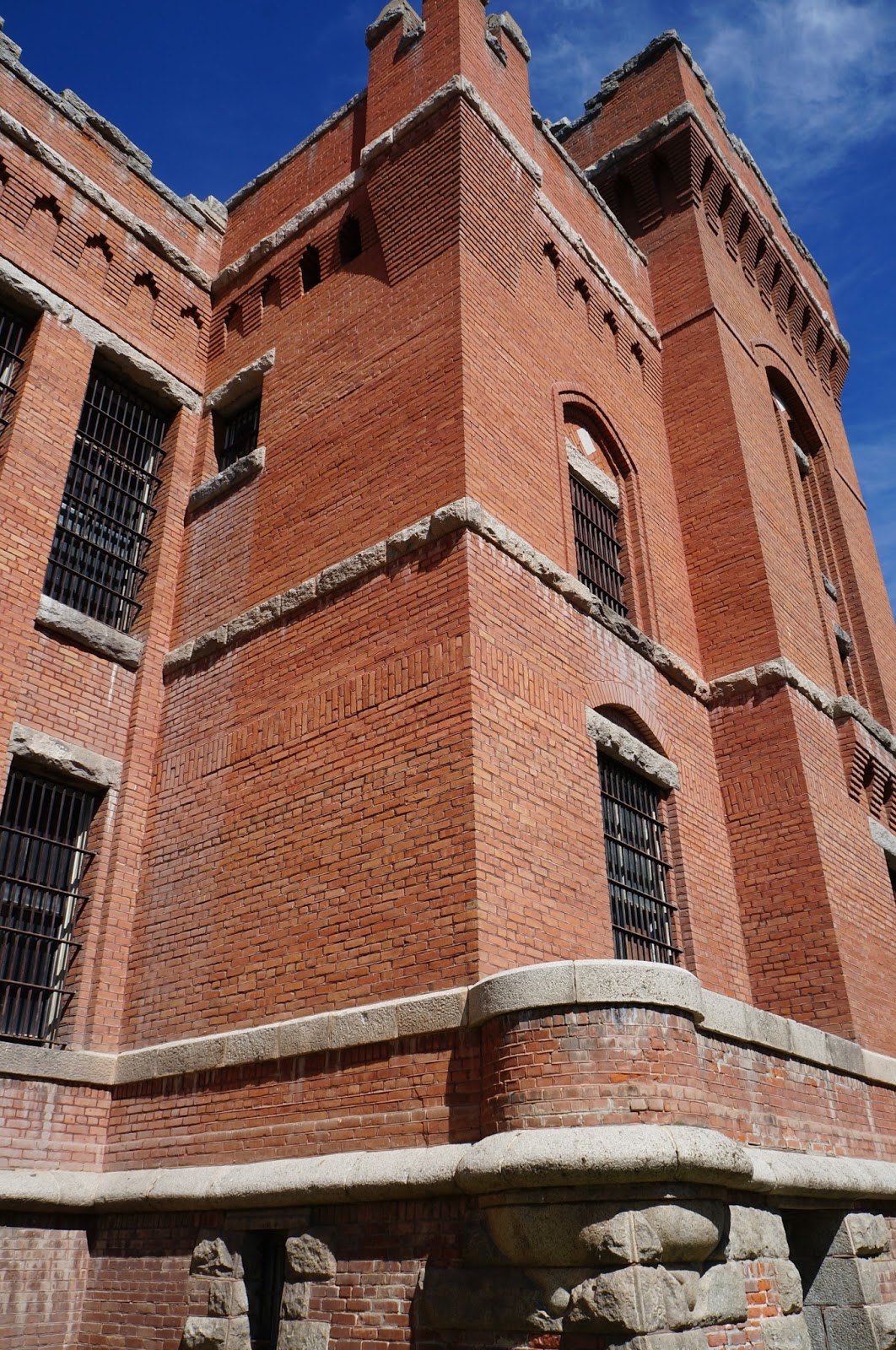
The original Cell House did not have running water or sewer facilities. Each cell had two buckets, one for sewage and one for water. I’m not sure why they put this guy in the display, but it definitely scared the crapola out of us when we came around the corner.
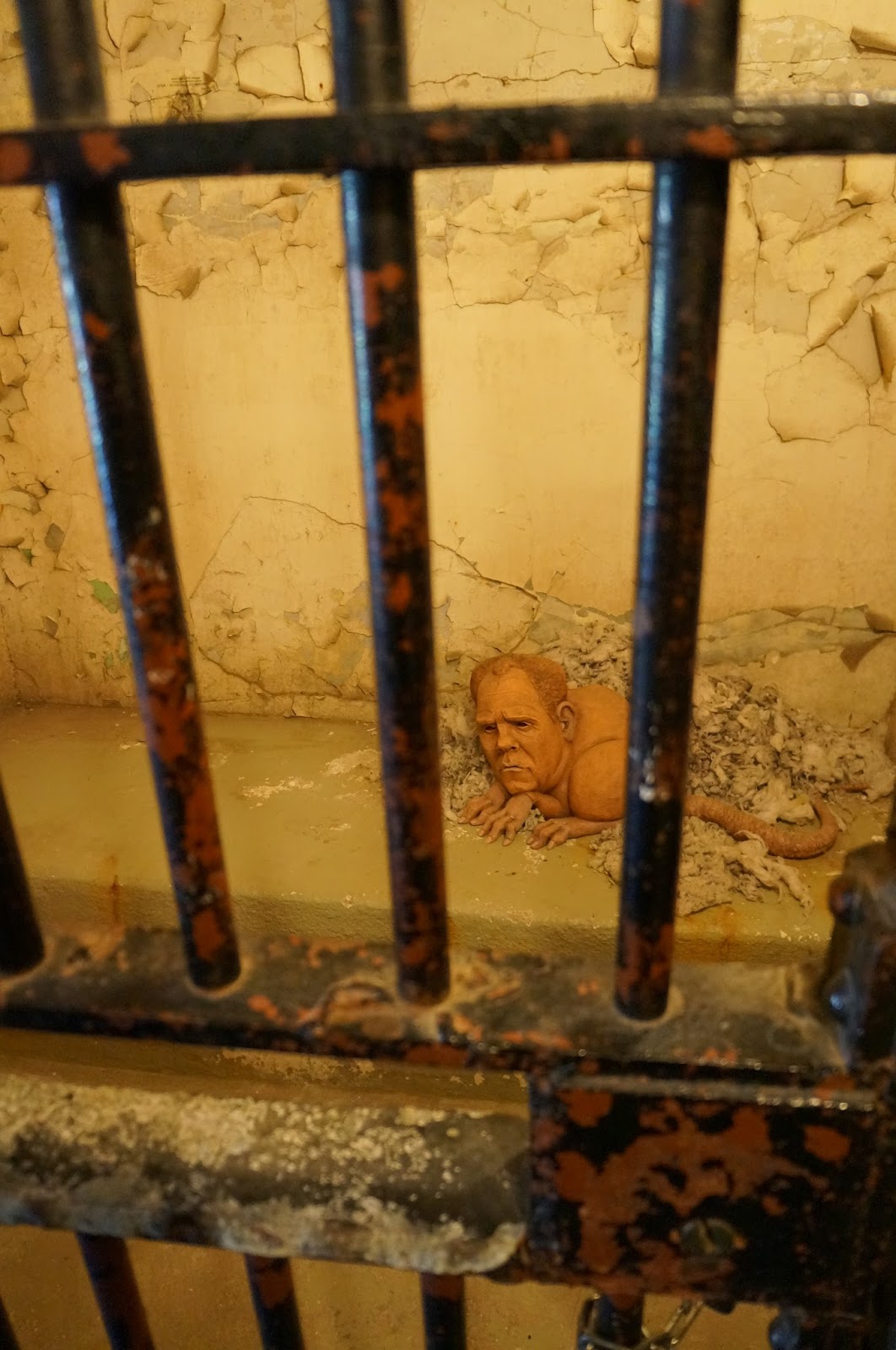
An armed guard was situated in this tunnel to oversee the inmates during meals served in the basement until 1960. He had gun ports which allowed for the firing of a weapon or the launch of tear gas cannisters.

Donated funds built a 600-seat theater in 1919 which became the center of the work incentive program. It hosted boxing, traveling theater troupes, movies, plays, concerts, prison band performances and religious services until it was gutted in a suspicious fire in 1975.
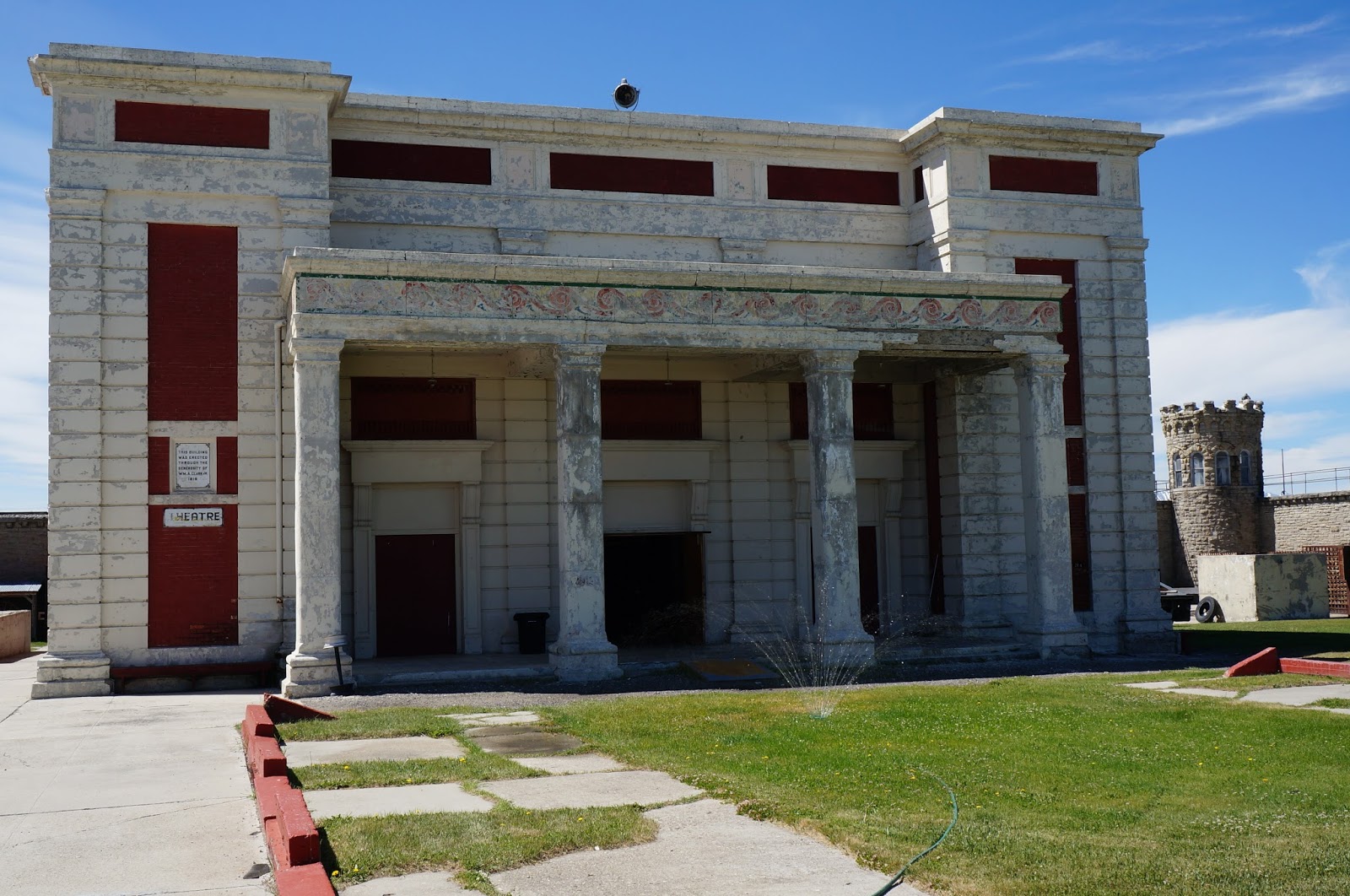
This execution scaffold is one of the few original hanging gallows remaining in the United States and has the very unlucky “13” steps leading up to the trapdoor platform. It was called the Galloping Gallows because each part was numbered so it could be quickly dismantled, galloped to the next necessary location in Montana, and reassembled like a jigsaw-puzzle-by-number by literally anyone.
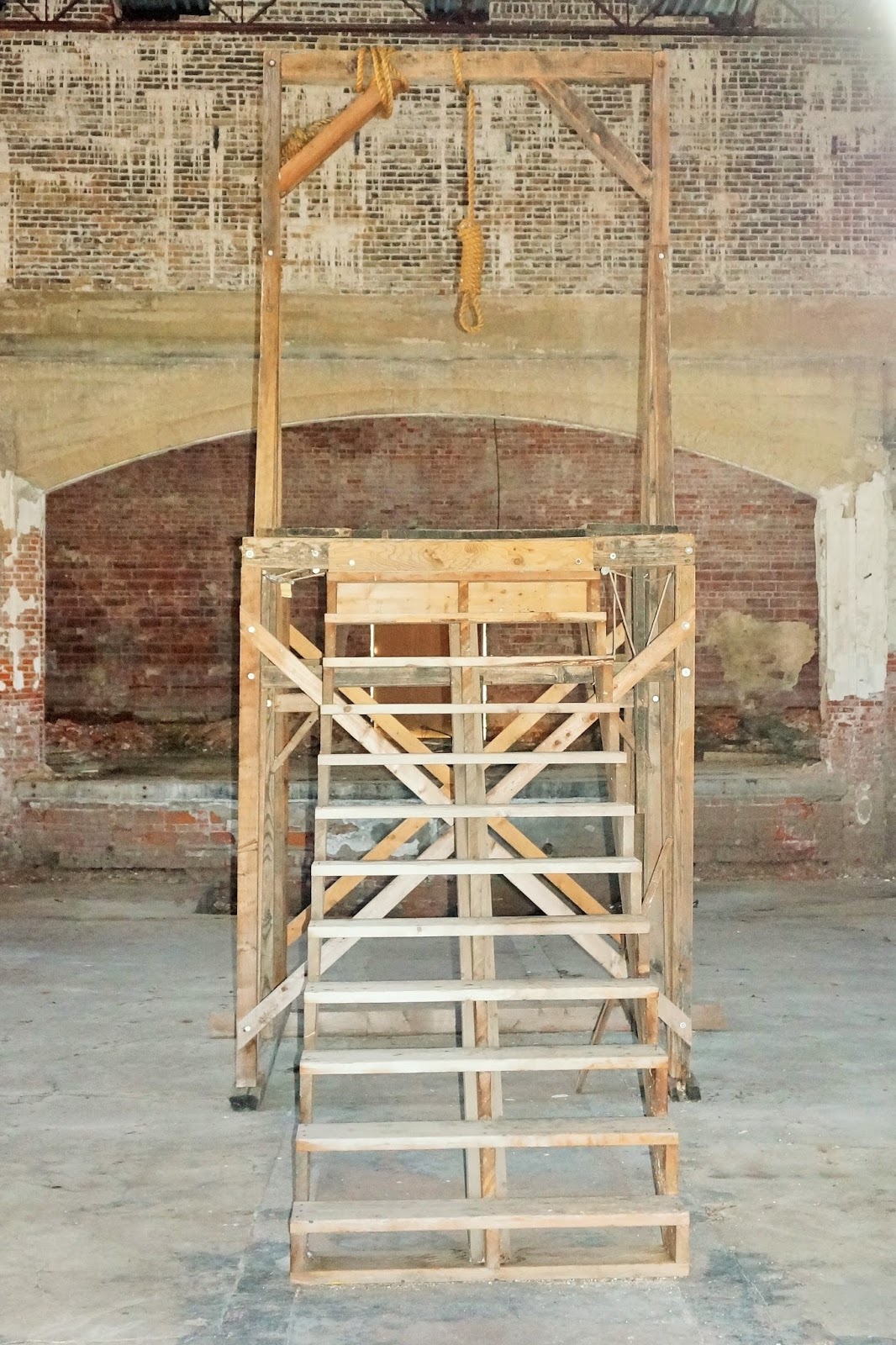
The double white doors, called a Sally Port, provided the only vehicle entrance to the prison. A steel I beam swung across the inside door to prevent a vehicle from ramming it. The Prison Museum also hosts a extensive collection of 150 or so collector cars on the grounds.

MONTANA SMOKEJUMPERS CENTER
The Montana Smokejumpers Center in Missoula, MT was an absolutely fascinating look into the work of the elite firefighters who make their living jumping out of planes to reach remote wildfires throughout the West. Although the visitor center has educational displays, this facility is where they actually work and the tour takes you right into their daily workaday world!
Only 400 out of 25,000 forest firefighters nationwide work as smokejumpers, and competition to enter the program is stiff. Most applicants have 10 years or more forest firefighting experience. Each year, 3,000 prospective smokejumpers apply, 300 are selected for consideration, 17 are selected, and perhaps only 12 make it through the six weeks of grueling, extensive training.
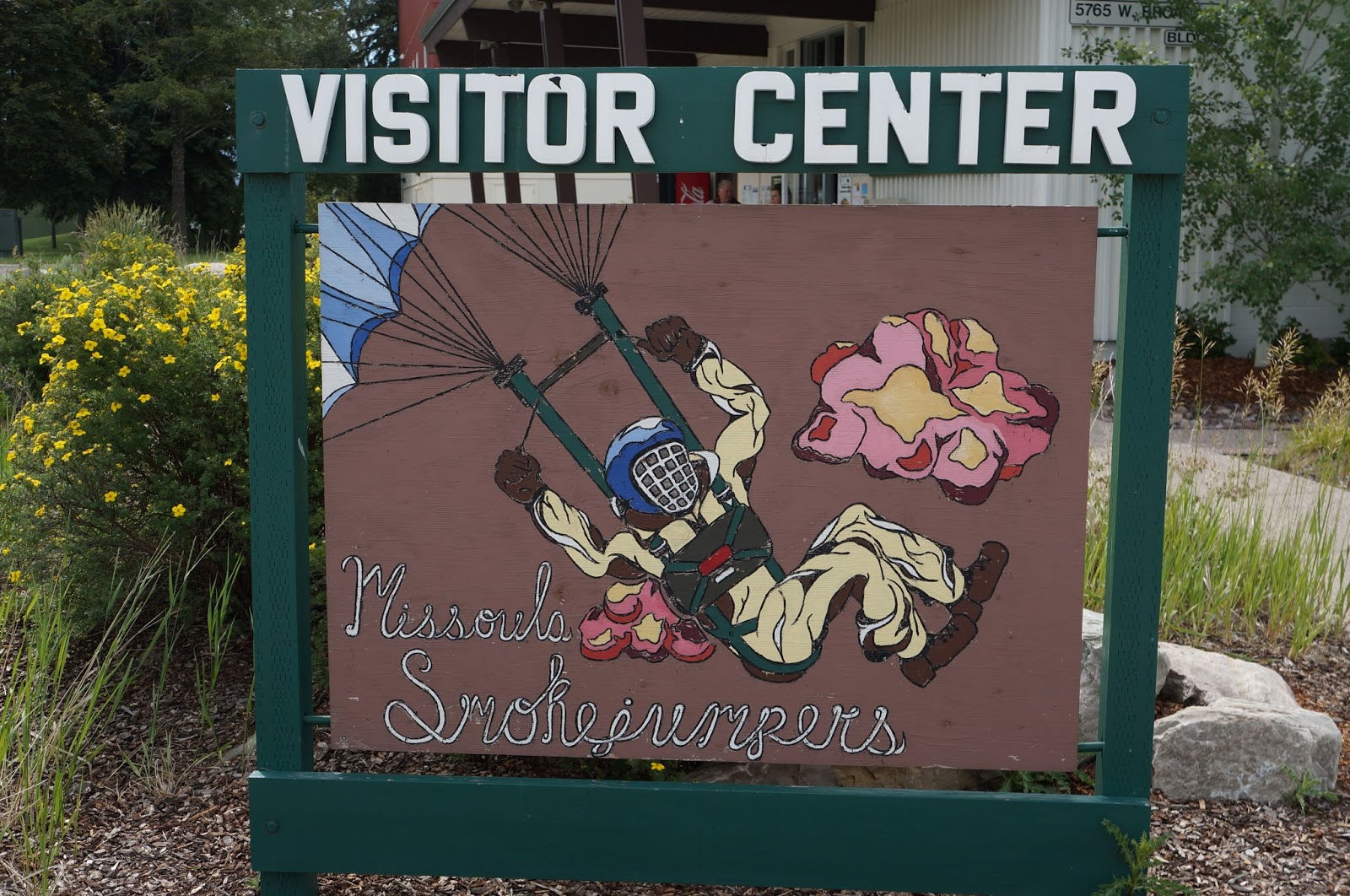
Smokejumpers wear about 125 pounds of gear and equipment when they jump, including main parachute, reserve parachute, huge lengths of rope (for when they land on a tree top), short term food and water (greater quantities are dropped later) and more. The full suit is made of Kevlar, which is the same material they use for bullet-proof vests. The huge orange bag is for packing up all that gear after landing, as it is no longer necessary, but must be packed out.
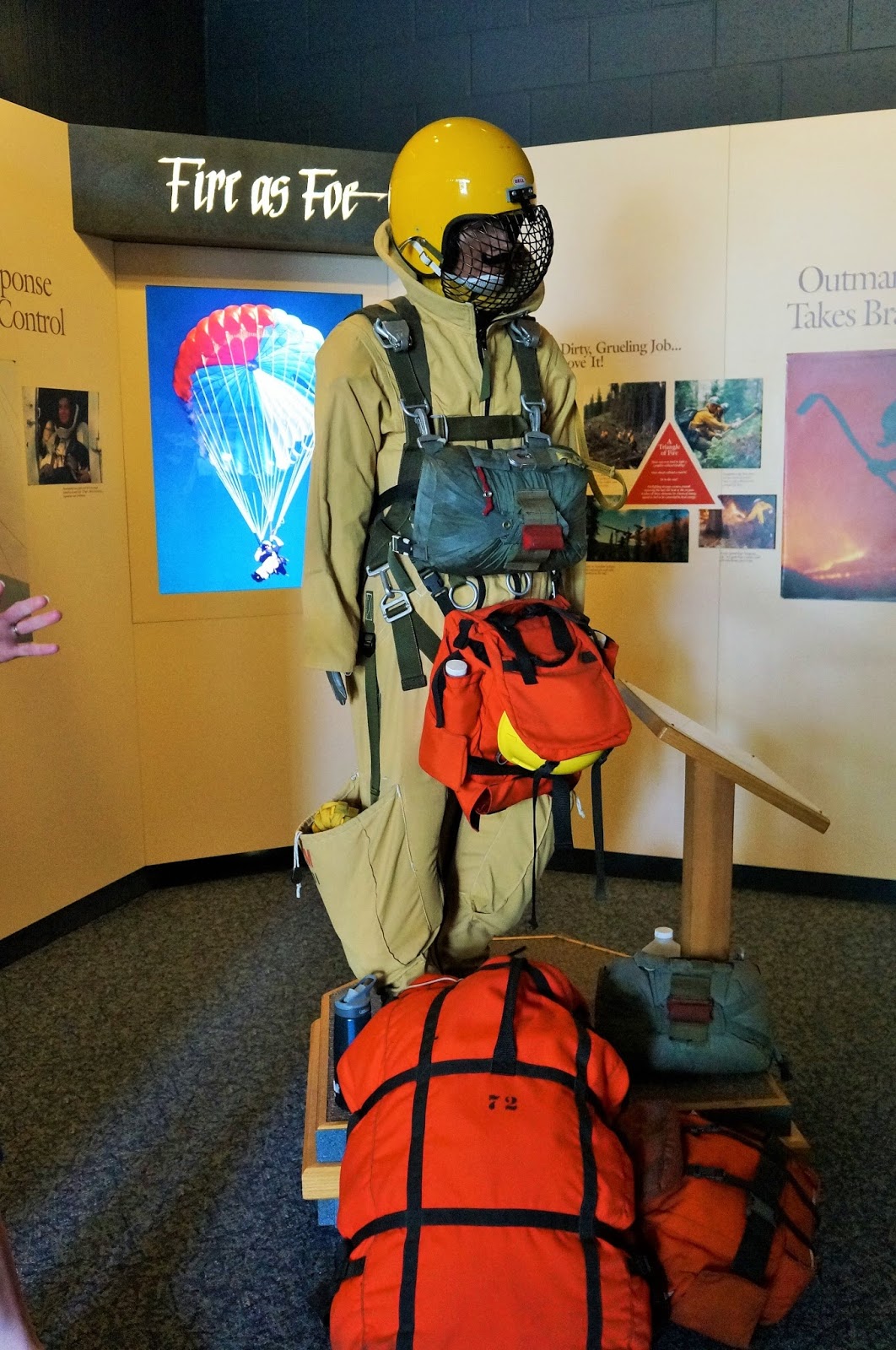
The work area is where the smokejumpers create all of their gear. They are all excellent seamstresses (seamdudes?) and can (and prefer) to create just about anything they might need themselves.
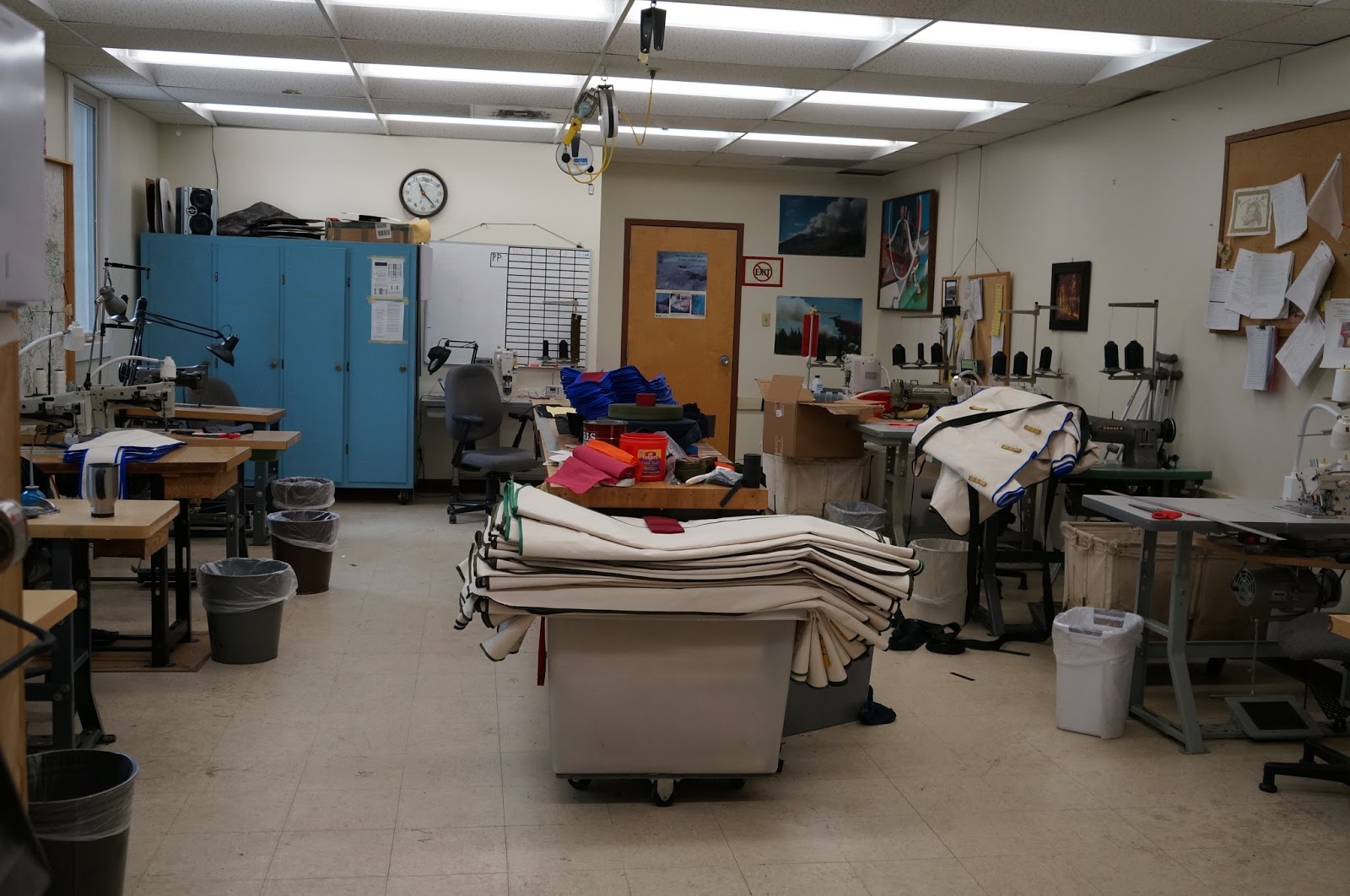
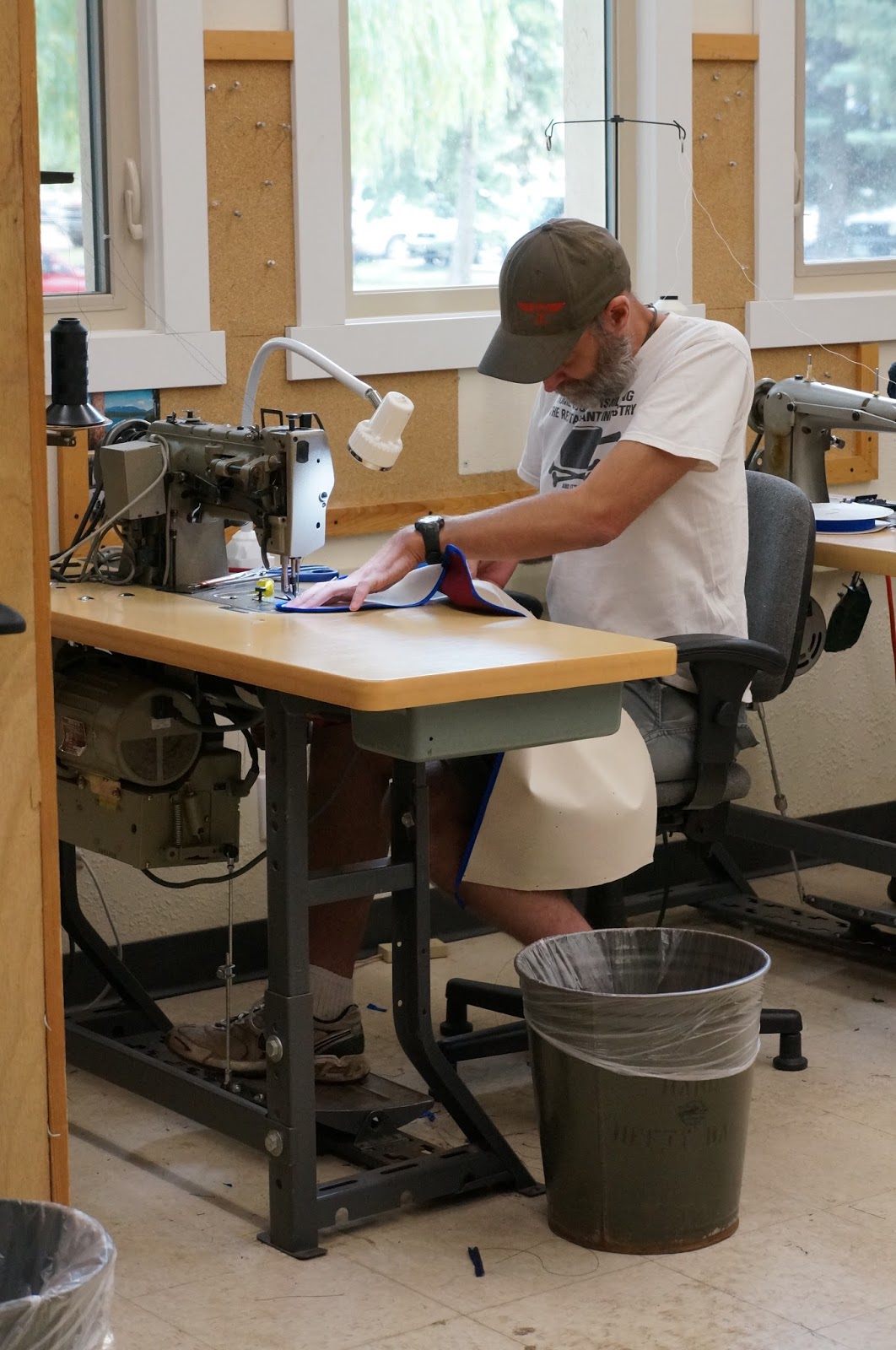
The parachutes are hung from the ceiling when they return, in order to shake/clean out any dirt, debris, branches or critters, and to allow them to dry. They are then fully inspected for rips and tears, and if any are found, patches are sewn on by the fellas. A parachute is retired after about 100 uses.

Parachutes must be painstakingly folded and repacked to exacting specifications in order to successfully deploy the next time. Only smokejumpers who have studied and become licensed to be an official repacker are allowed to do this critical work.
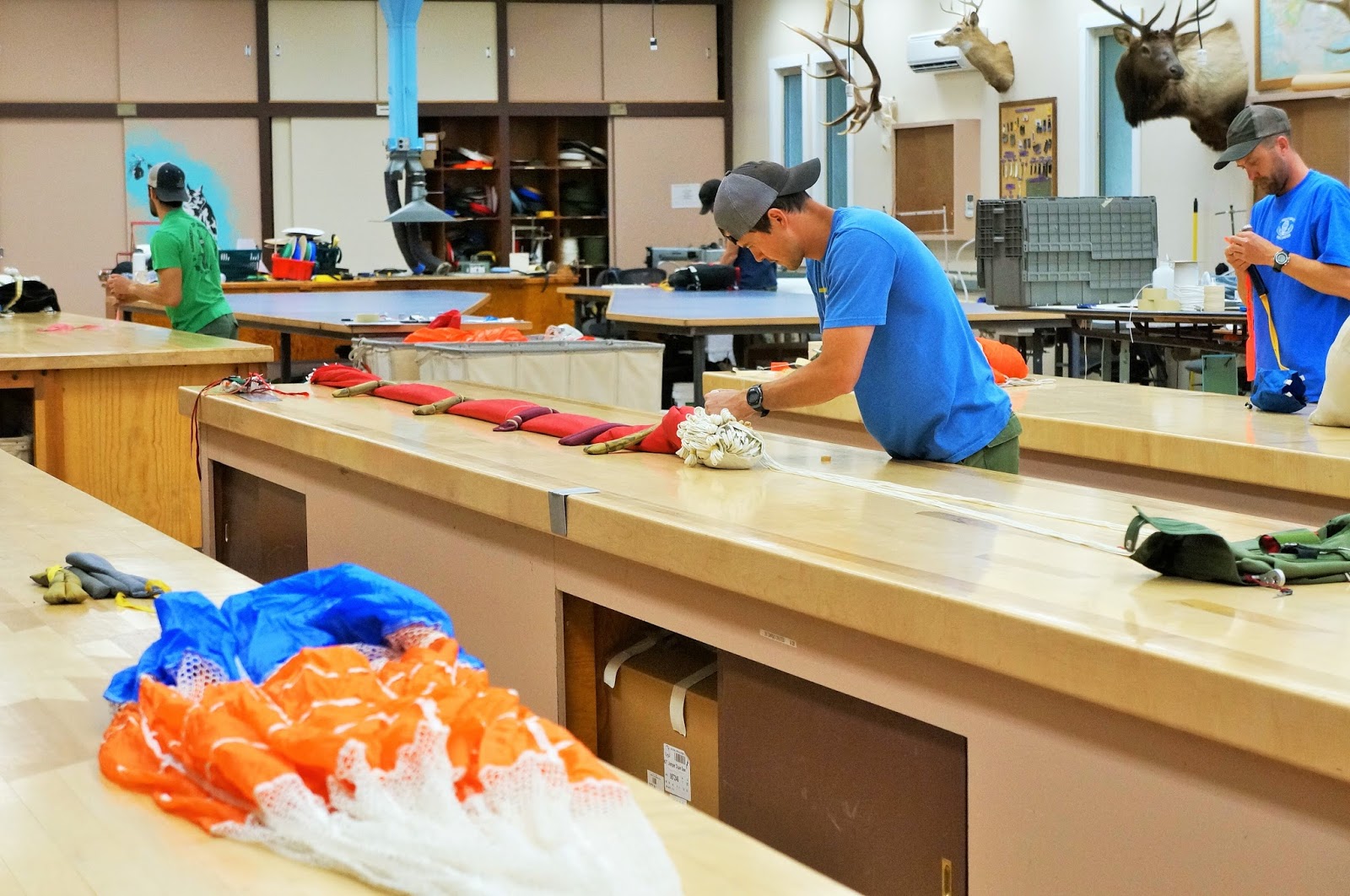
Smokejumpers have to be ready to go at a moment’s notice when a call is received. There may be multiple runs per day and they have exactly two minutes to be fully dressed and on the plane.


They’ve tried multiple systems (including computerized) over the years to designate who’s “on board” and available to go out runs on any given day, and have found that good old fashioned magnets that can be reorganized constantly work the best. The first guy on the list is the first to go out, AS LONG AS he’s not doing something else for the agency. Yellow indented means you’re not working that day. Yellow not indented means you’re working that day but assigned to be doing something else. Gray means you’re available. So, on this list, #17 is actually #1 to go when the call is received.

The guys (and a few gals, but not many) love their jobs and want to go out. However, it is very hot in all that gear and the plane is very turbulent, so puking is not uncommon even for seasoned veterans. This plane was bought from the military in 1990 for $1, and then $1,000,000 was immediately dropped into it to retrofit it for smokejumping.
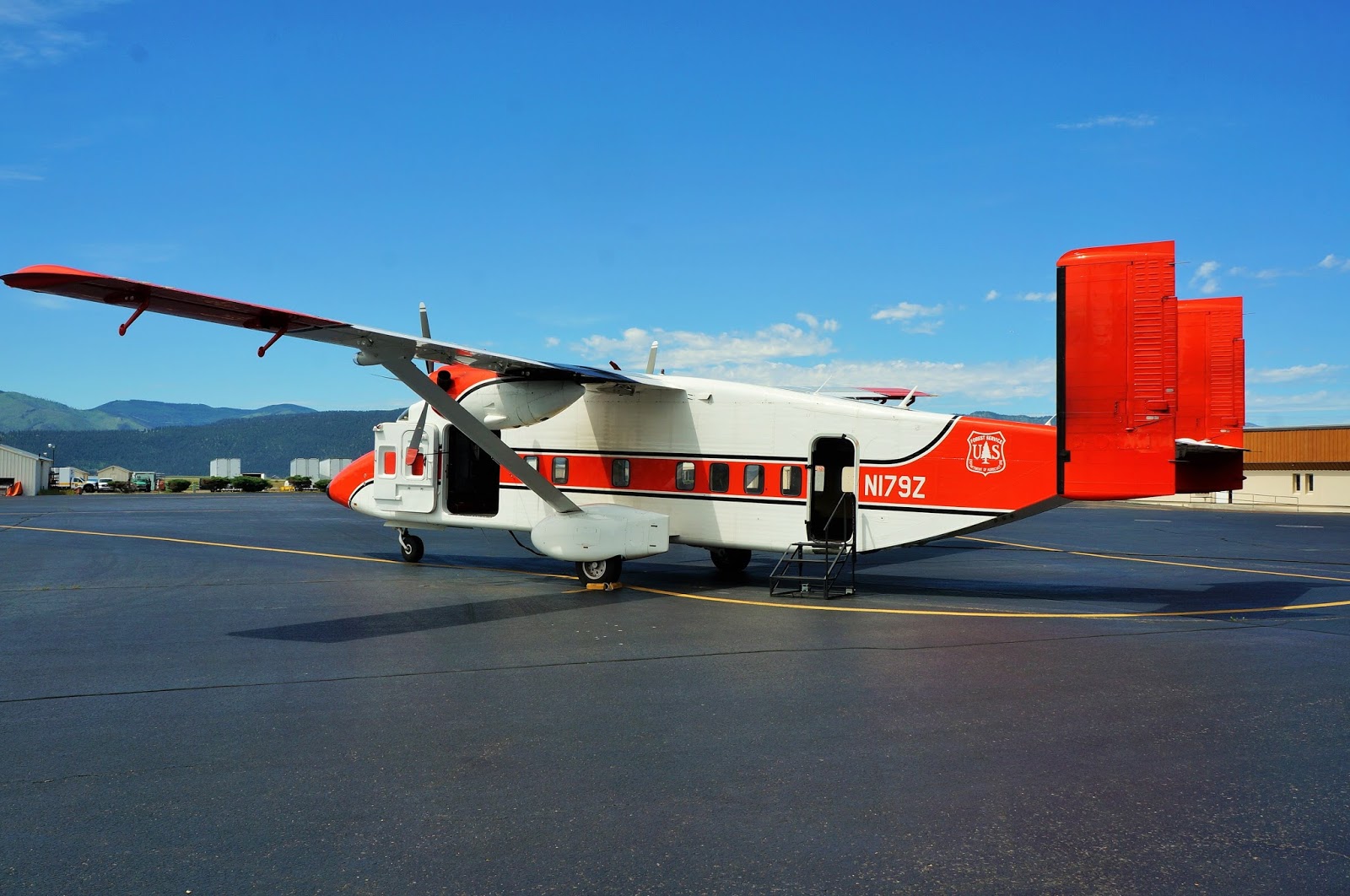
Usually, ten smokejumpers go out on a run. They are then dropped two at a time, and then the plane circles while the first two determine how extensive the fire is, and how many more smokejumpers may be needed to fight the fire. They may be living out in the forest near the fire for three weeks or more, working sixteen-hour shifts. They usually work on smaller, extremely remote fires and without benefit of water in their firefighting efforts.
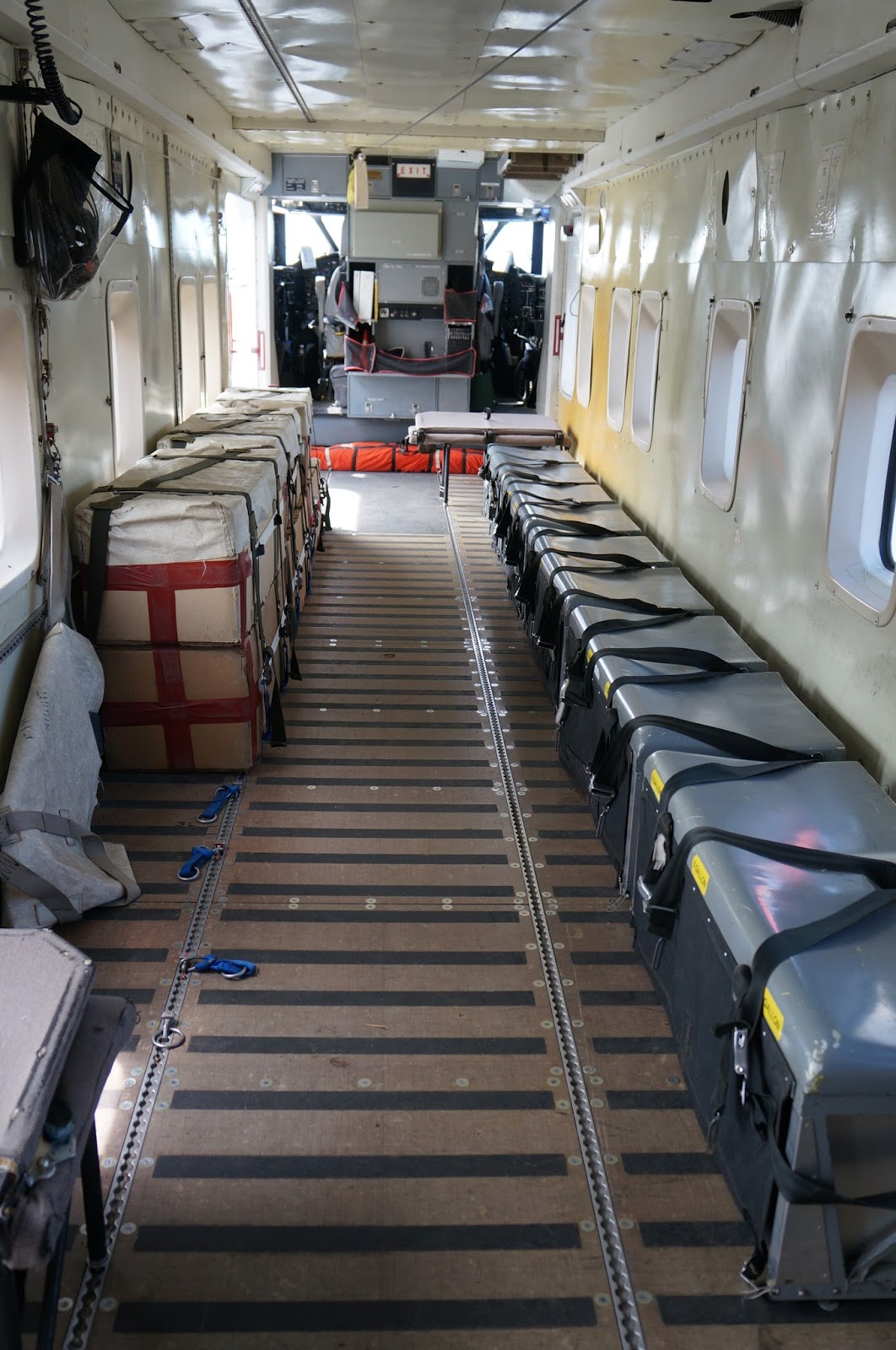
It is extremely loud so the “spotter” in the doorway whacks the smokejumper on the back of the leg when it’s time to jump, since “GO” could easily sound like “NO.” Weighted ribbons are dropped first to mimic a human landing and hopefully get him in the right place.
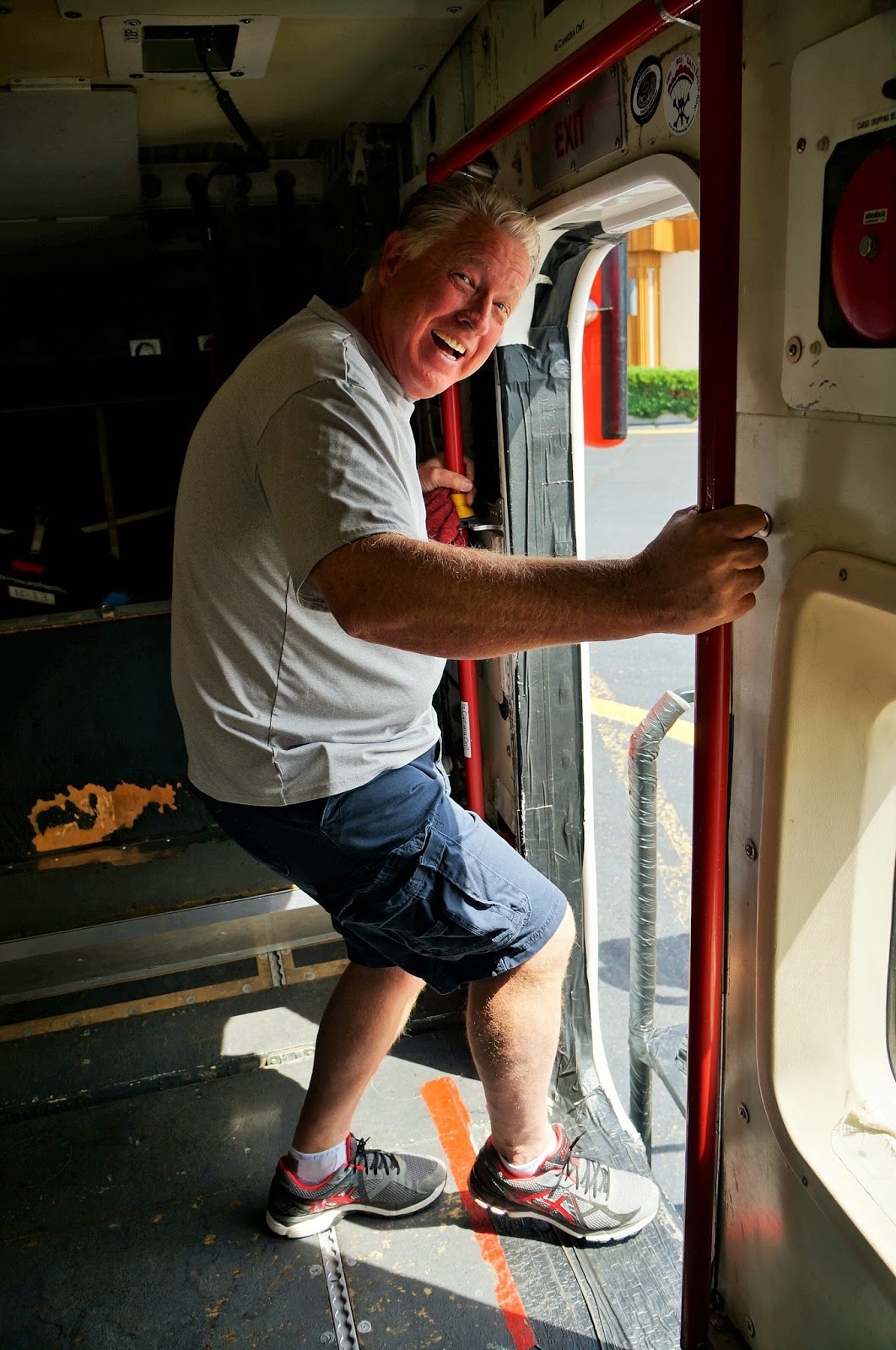
The smokejumpers thought Philip had “the right stuff,” so they let him do a jump and took a photo to commemorate the special moment! 🙂

Another treat in Missoula was Big Dipper Homemade Ice Cream, voted one of the Top Ten ice cream stands in the nation, where the line snakes around the building day and night.

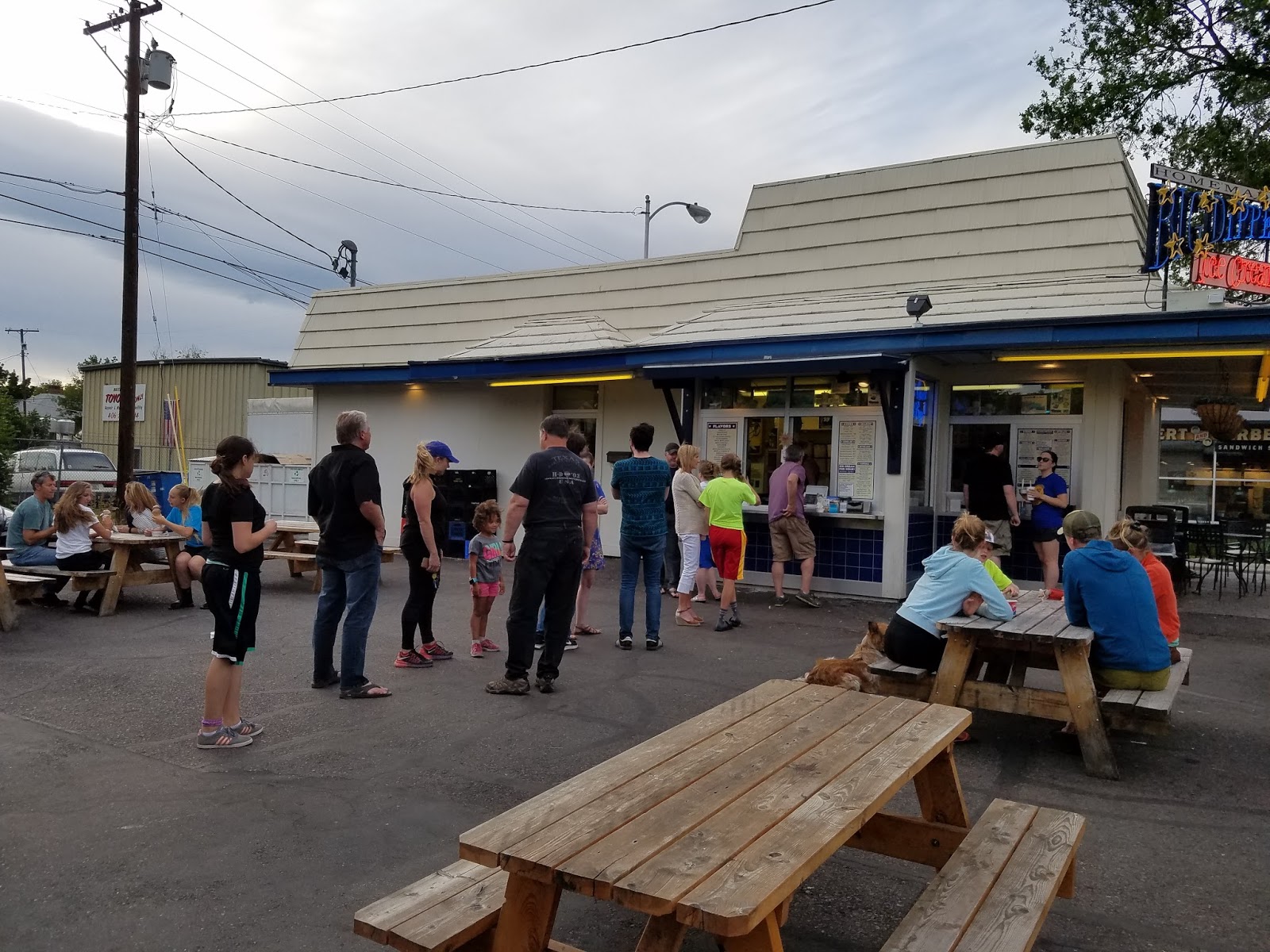
It’s really heating up at home and we’re feeling giddy as we compare the weather forecasts for where we’ve come from vs. where we’re headed!
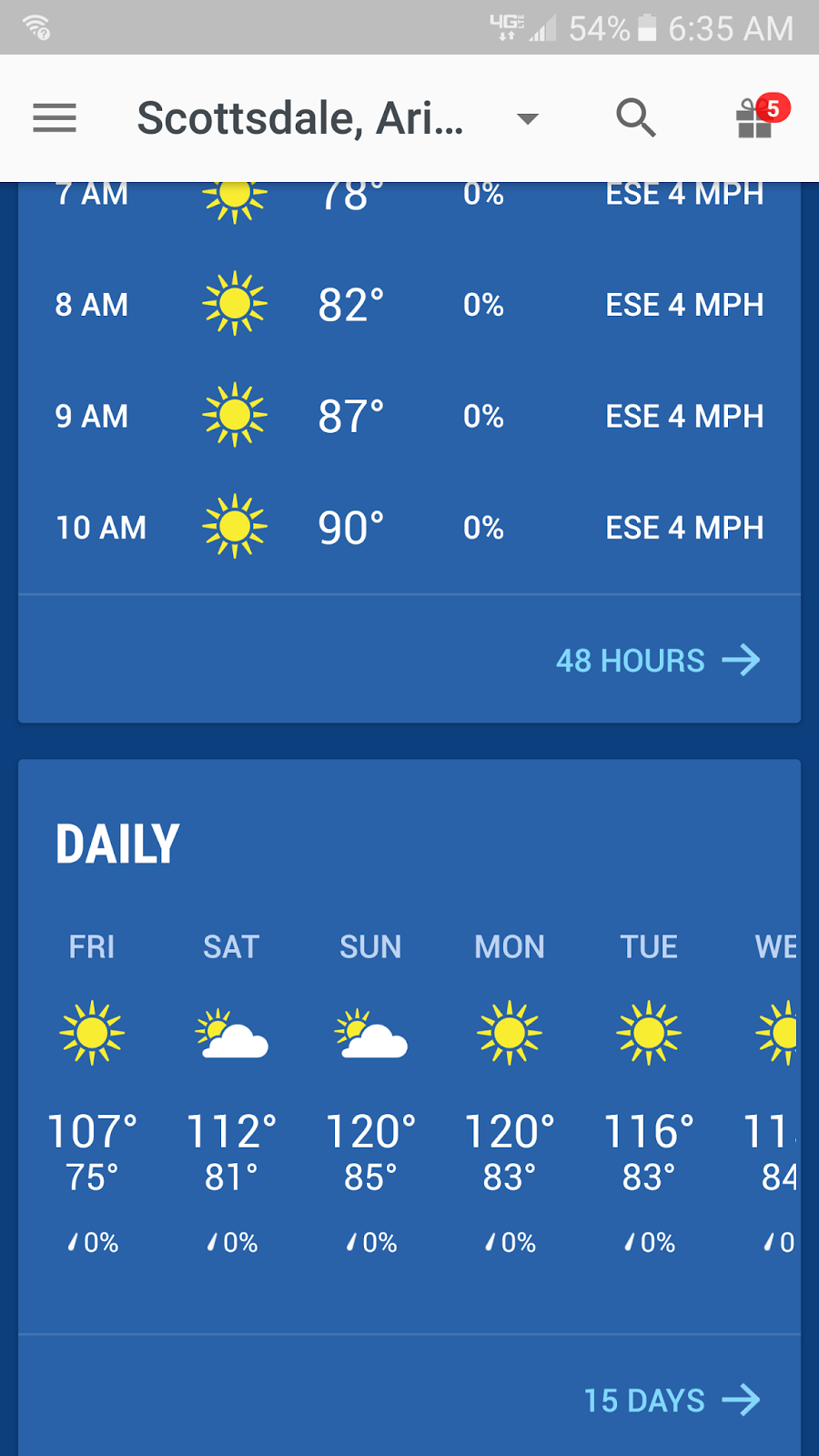
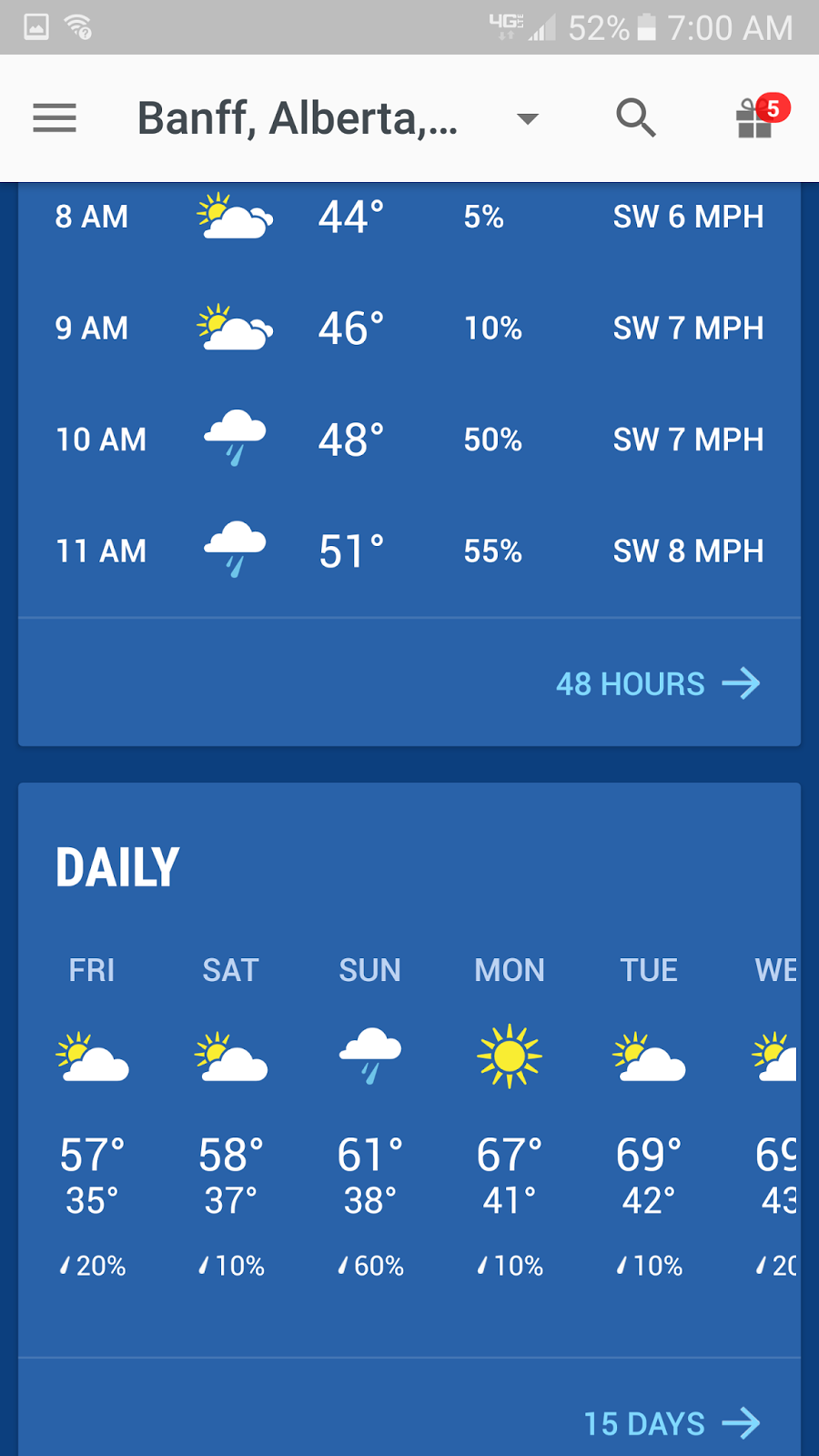
After a few days in Whitefish, we’ll be crossing the Canadian border! The Lucky Charm is feeling very lucky, indeed!

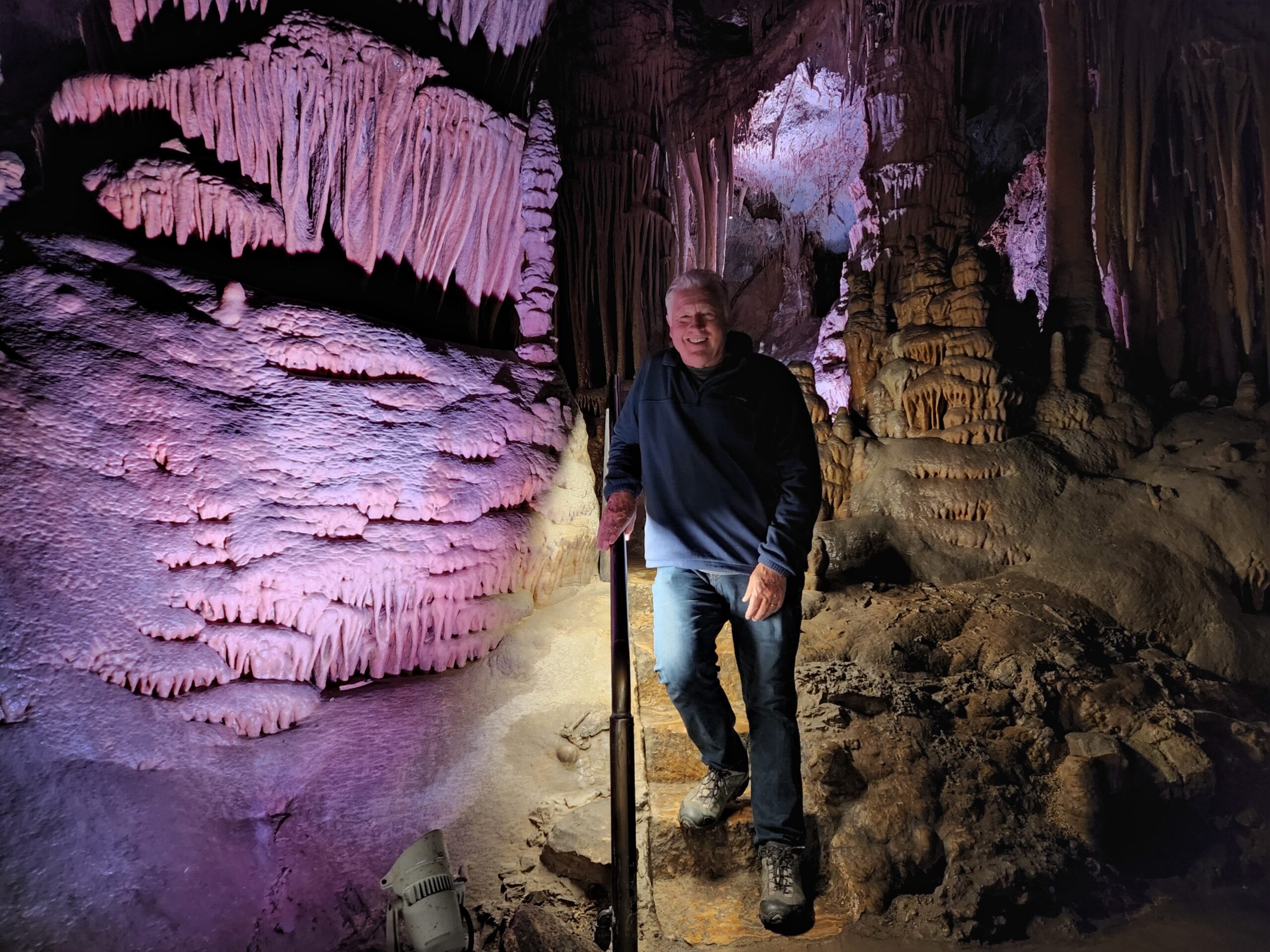

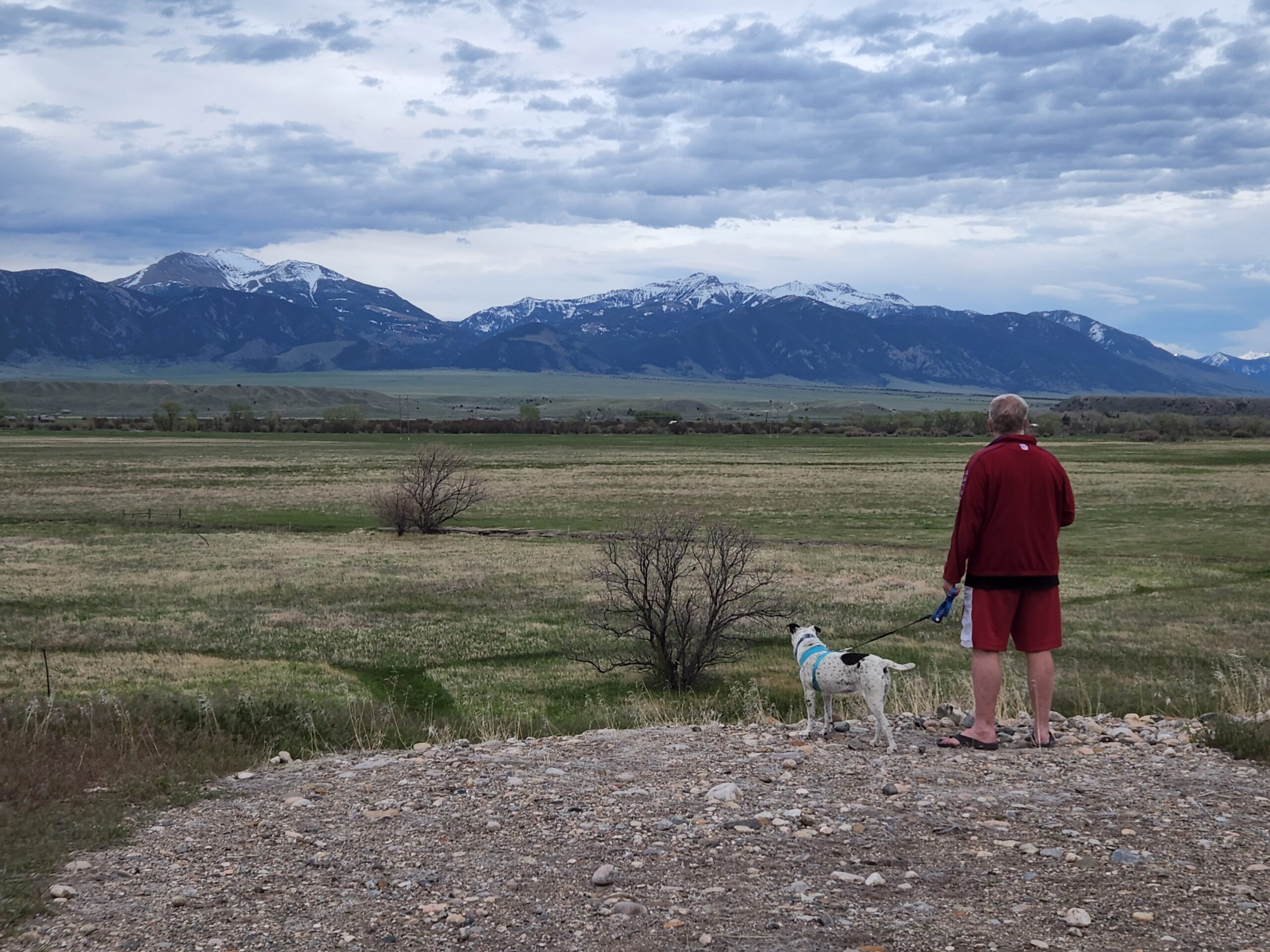
Leave a reply